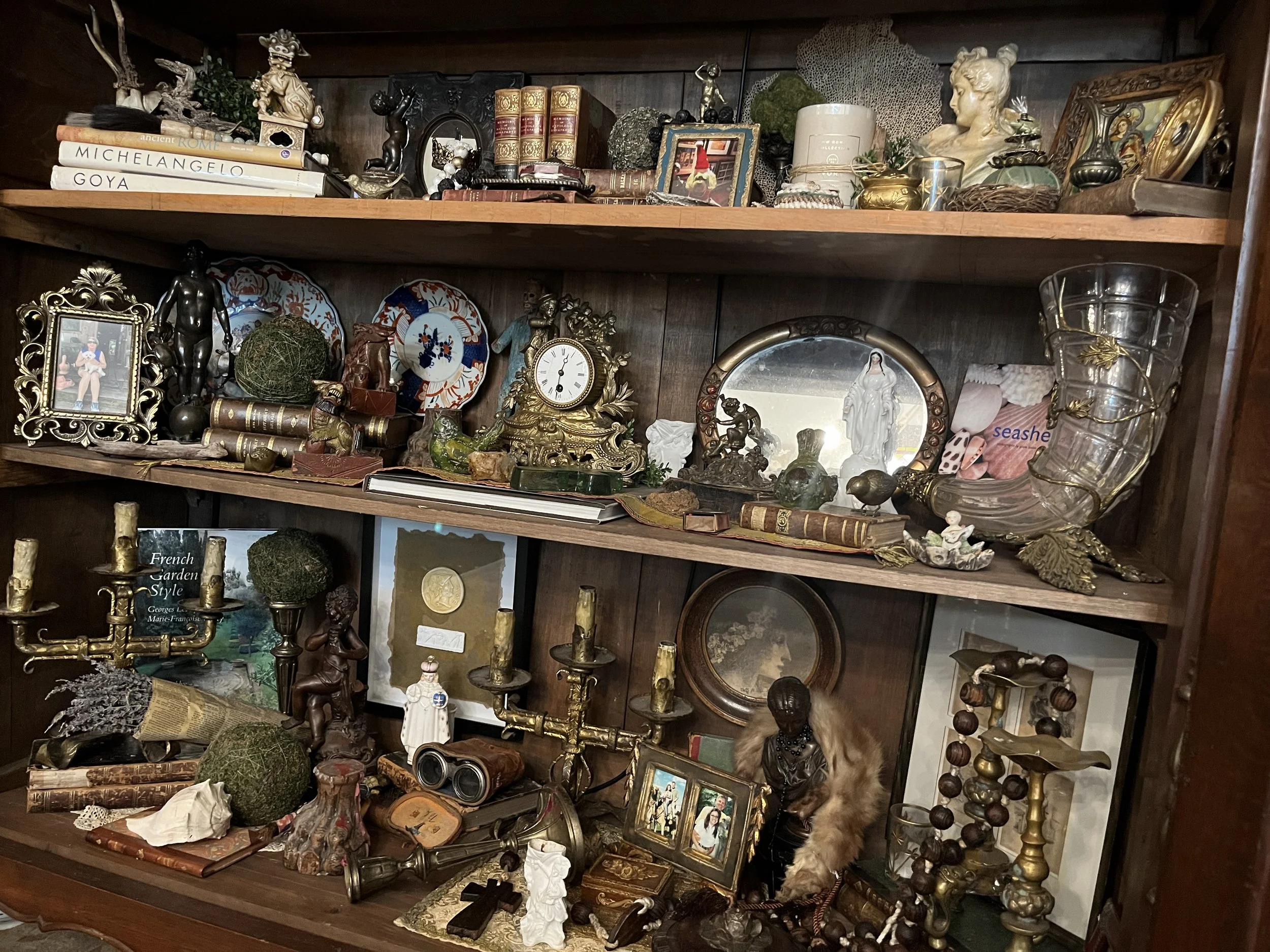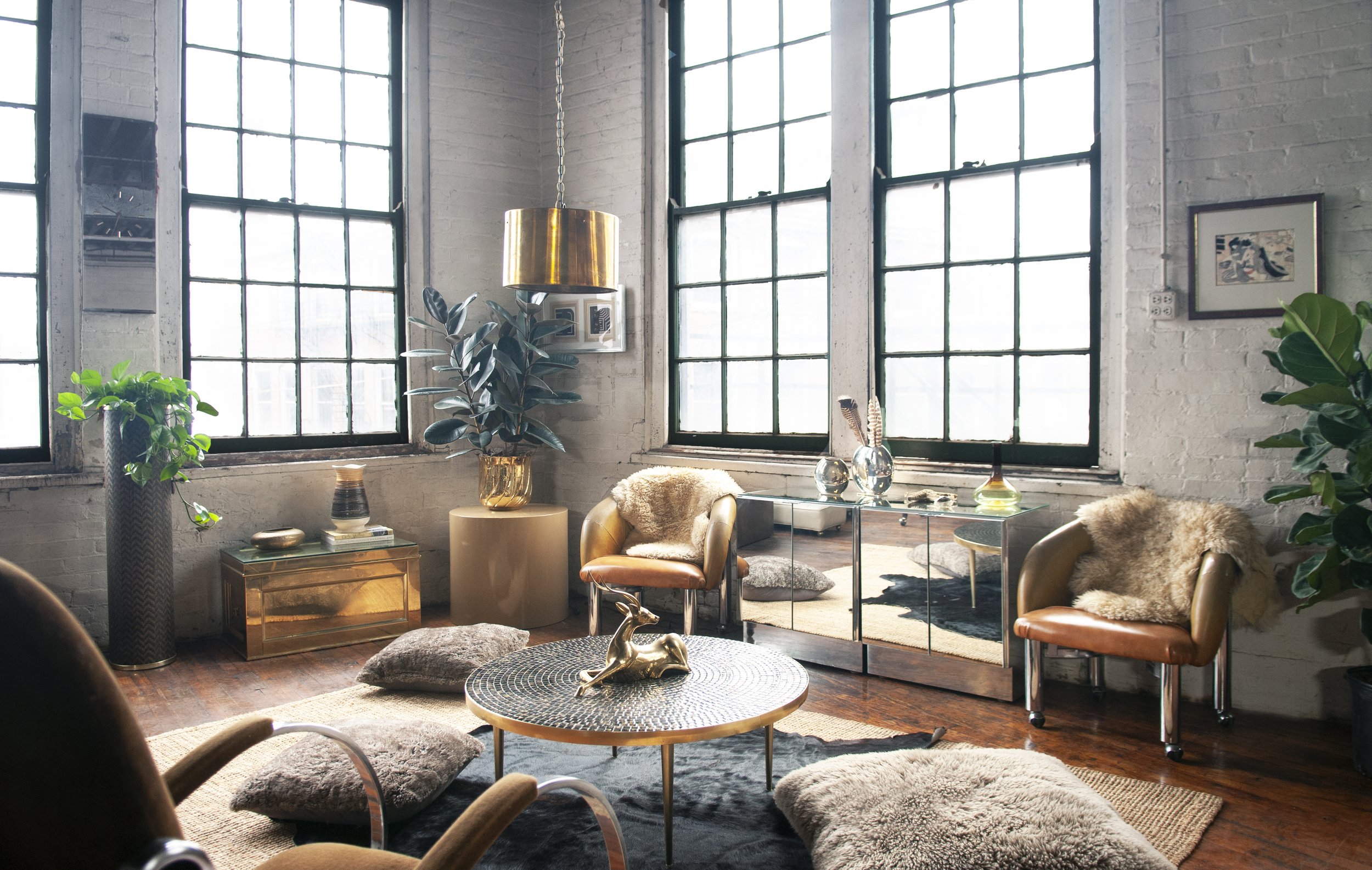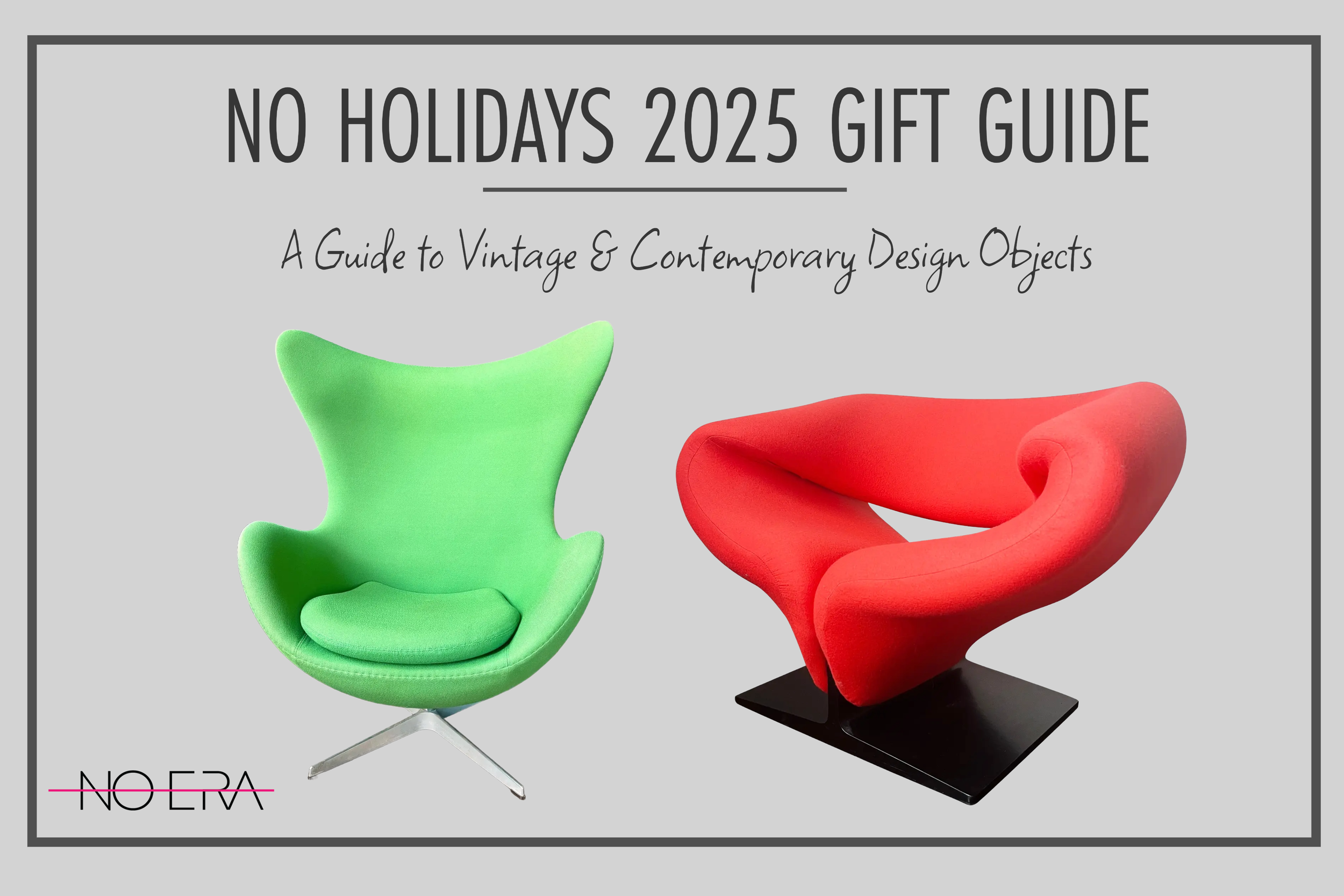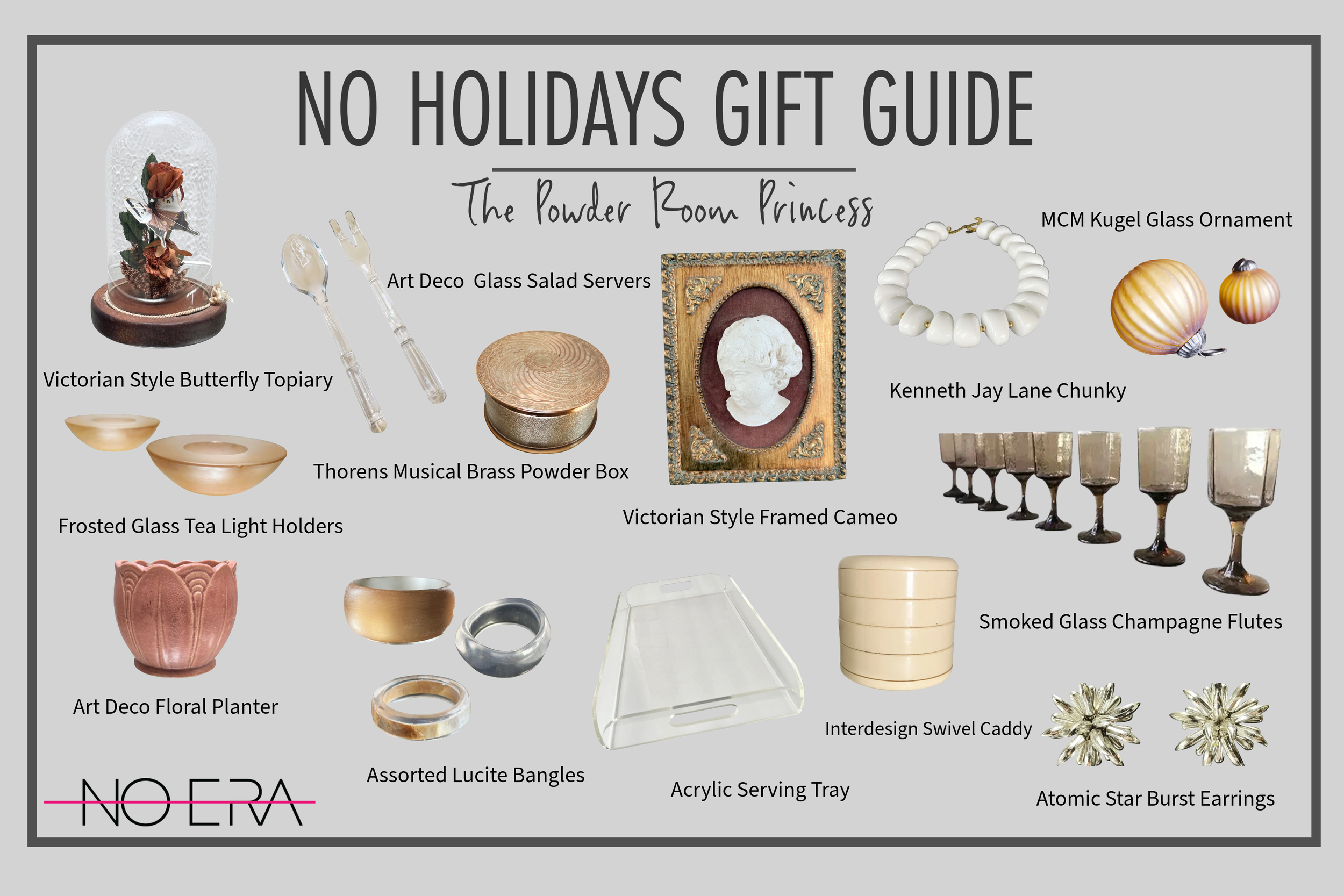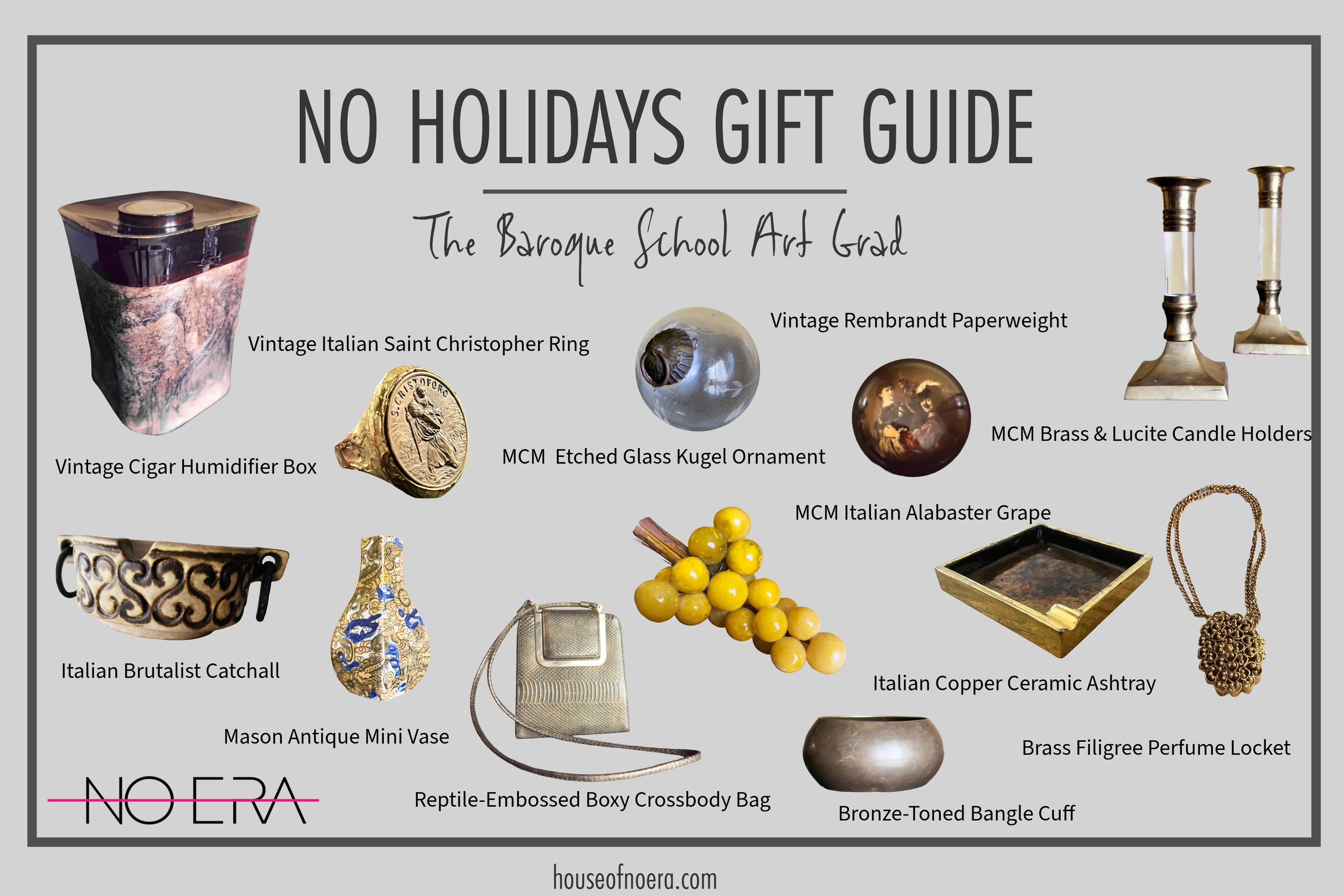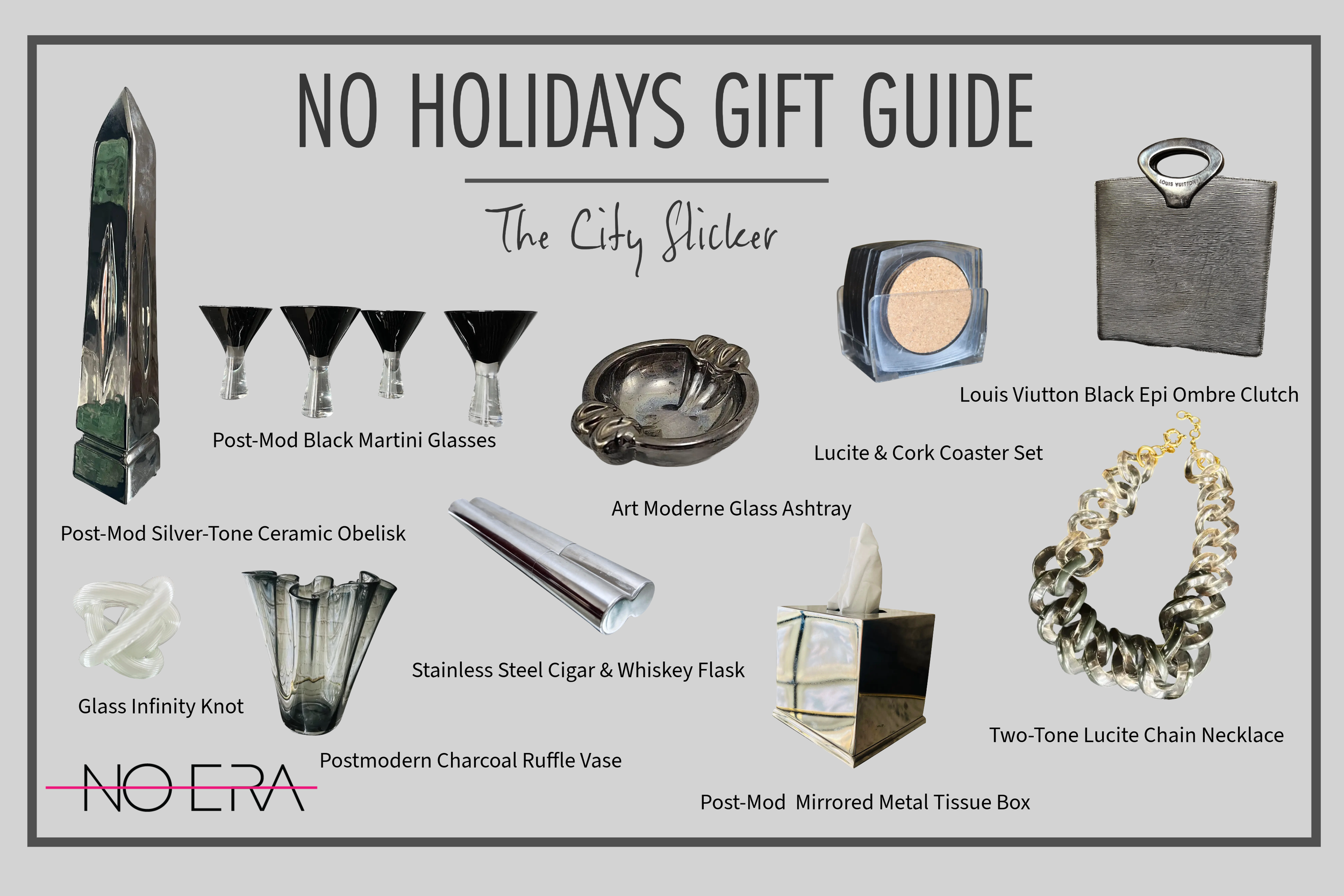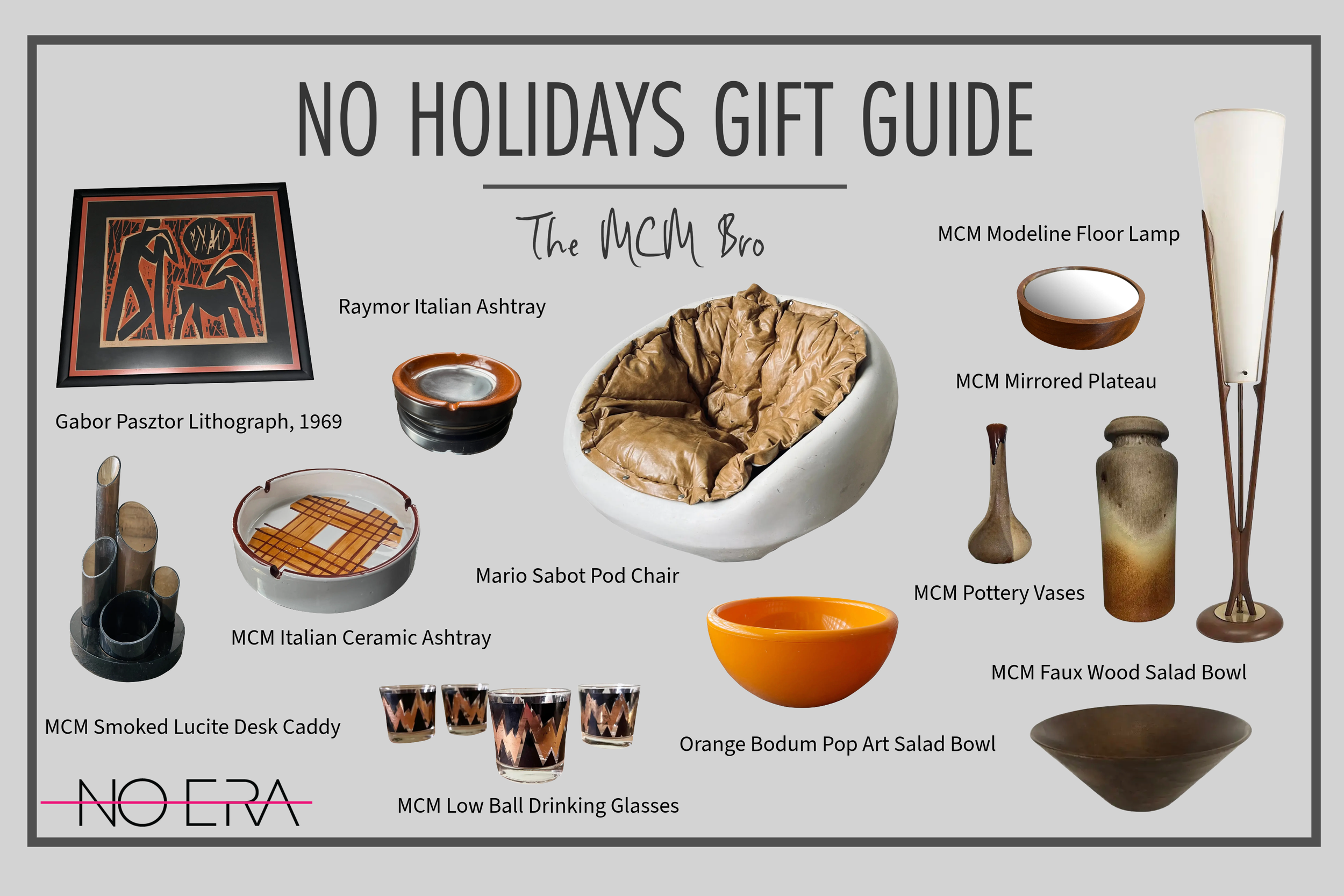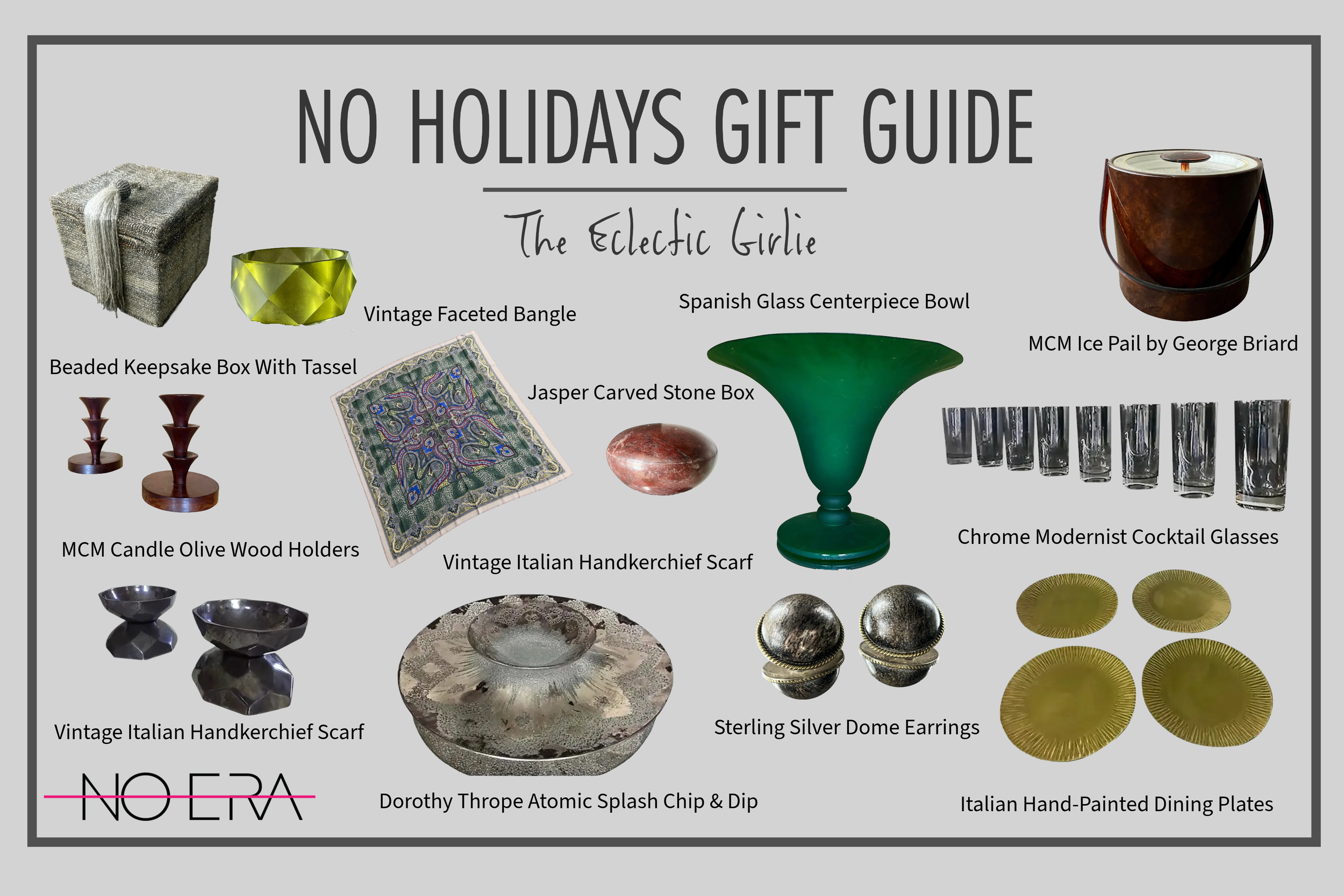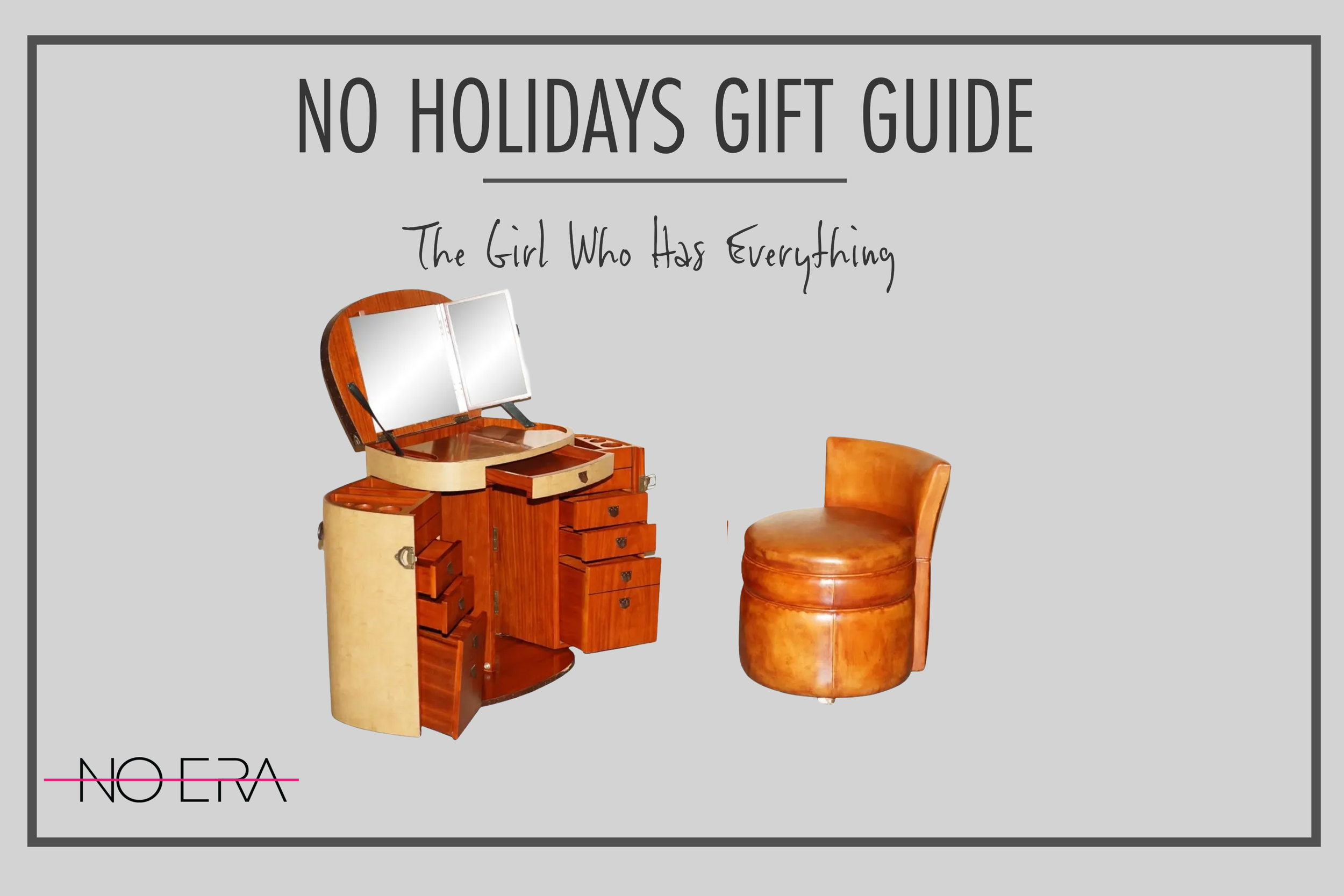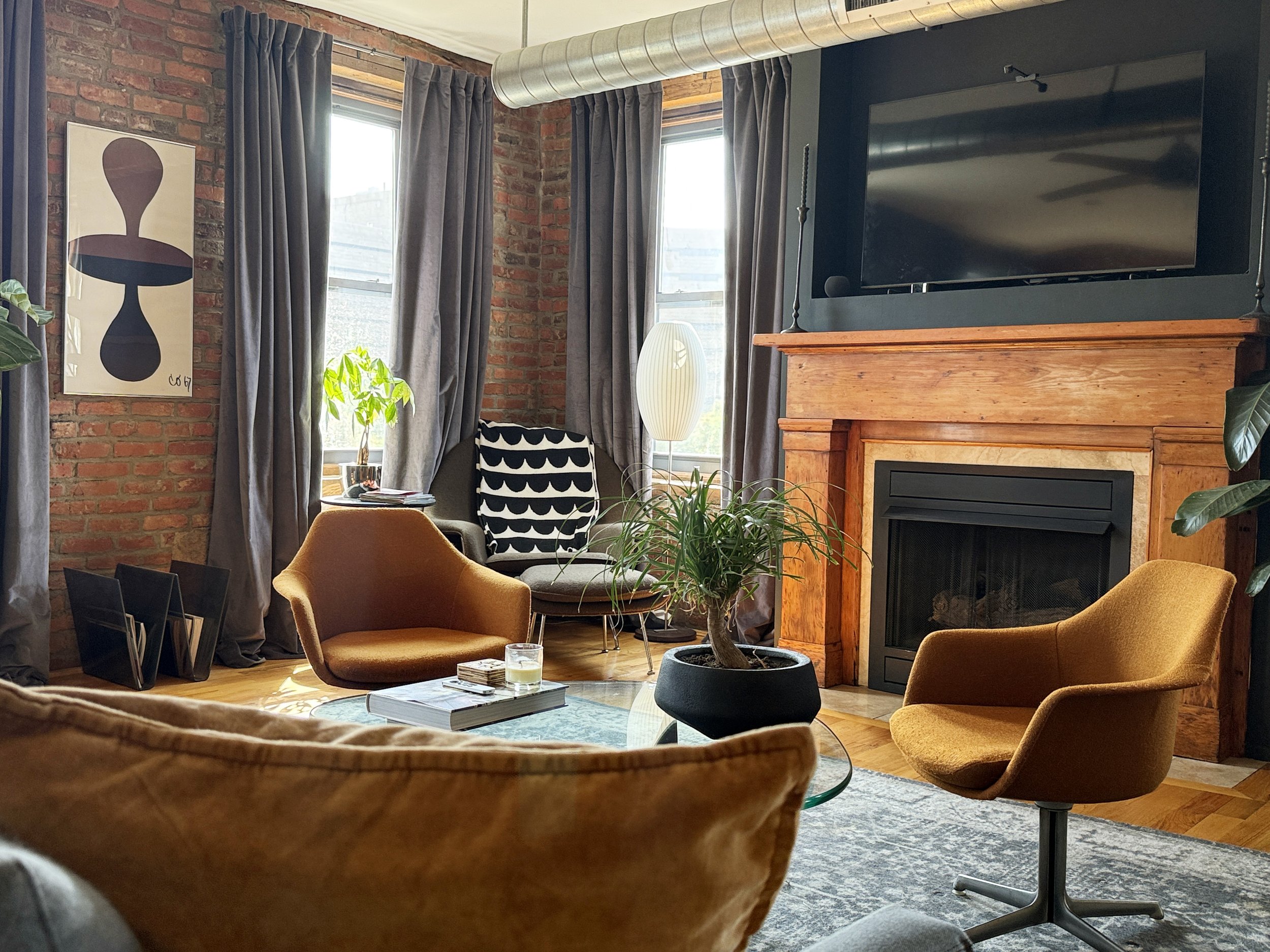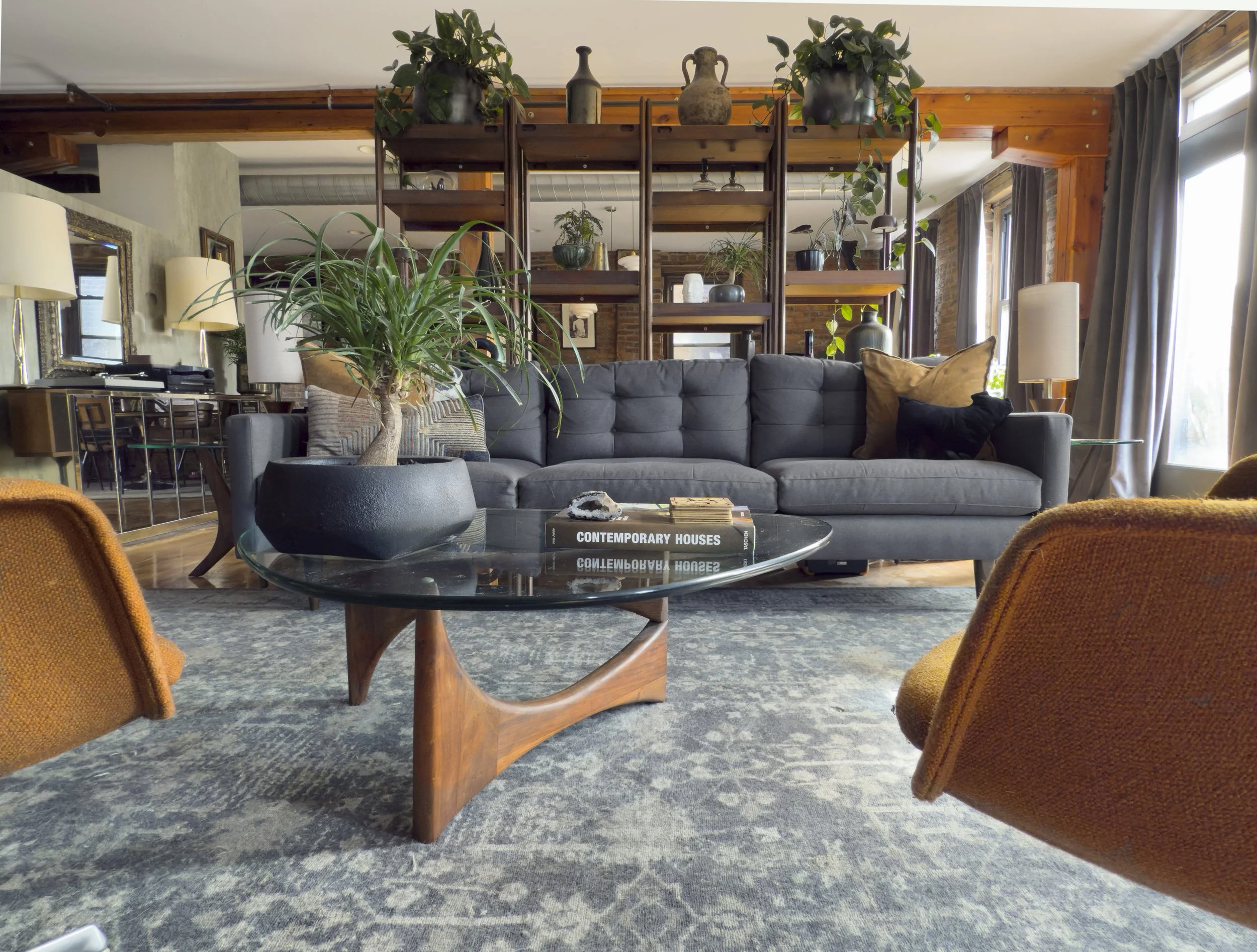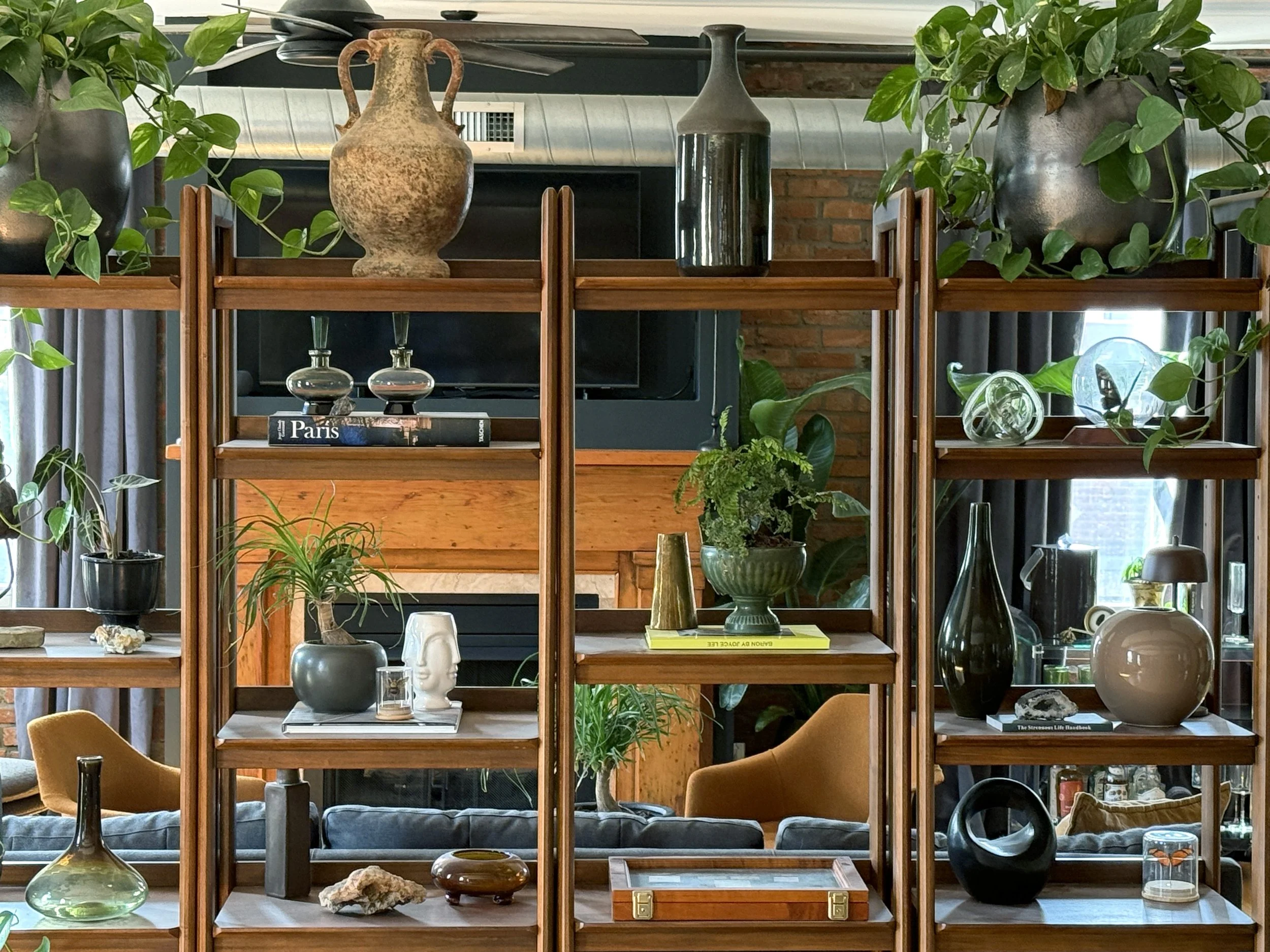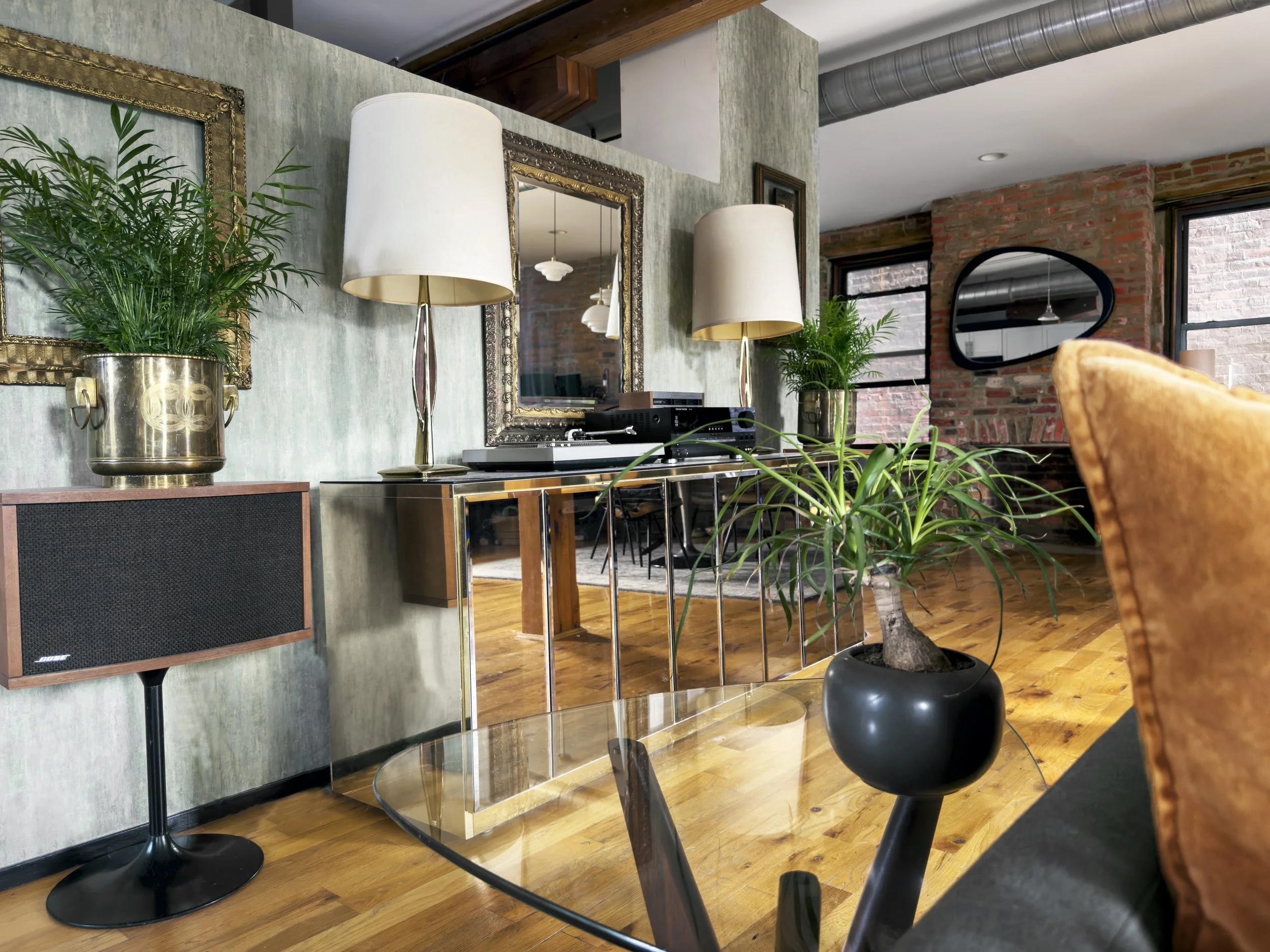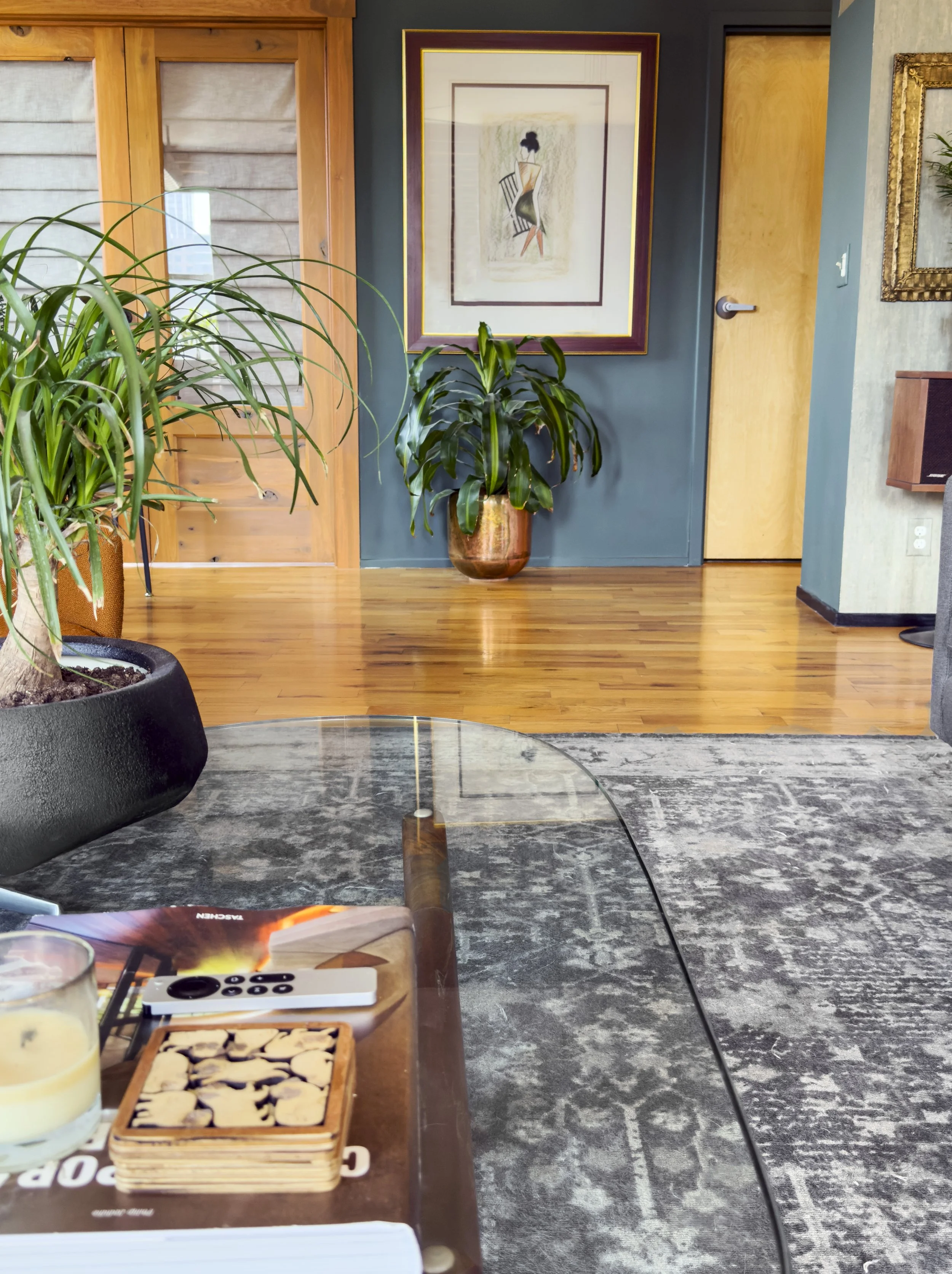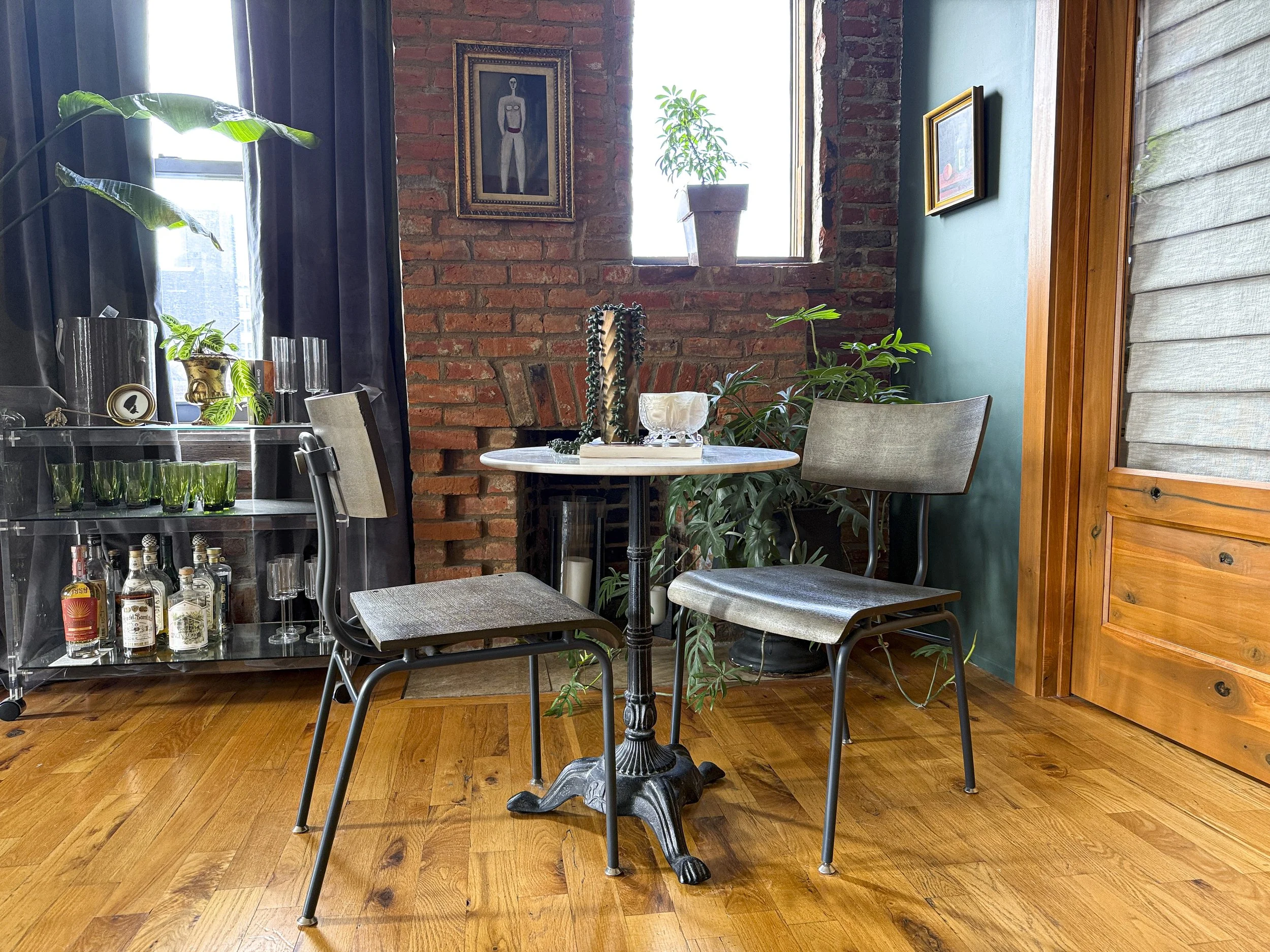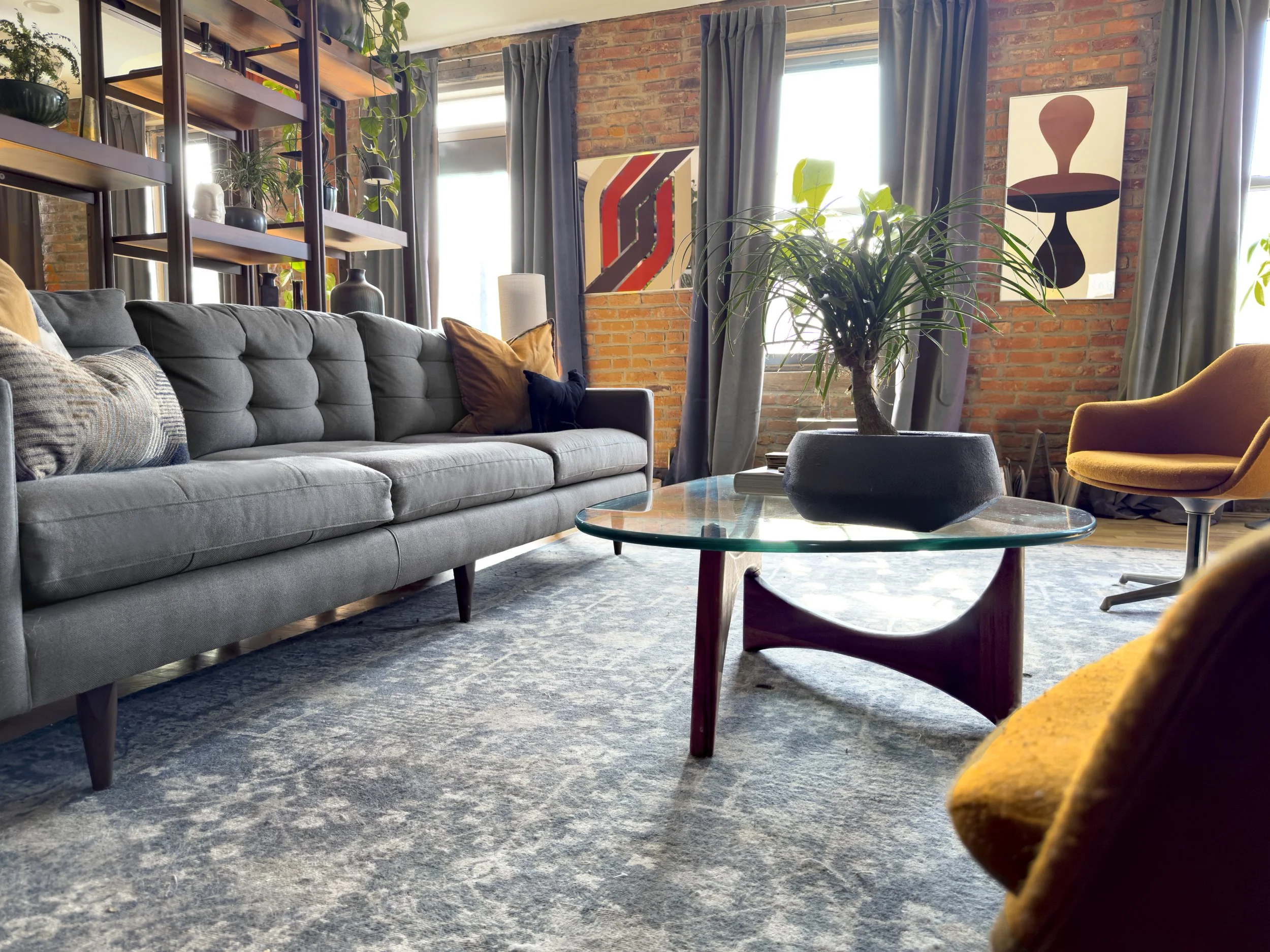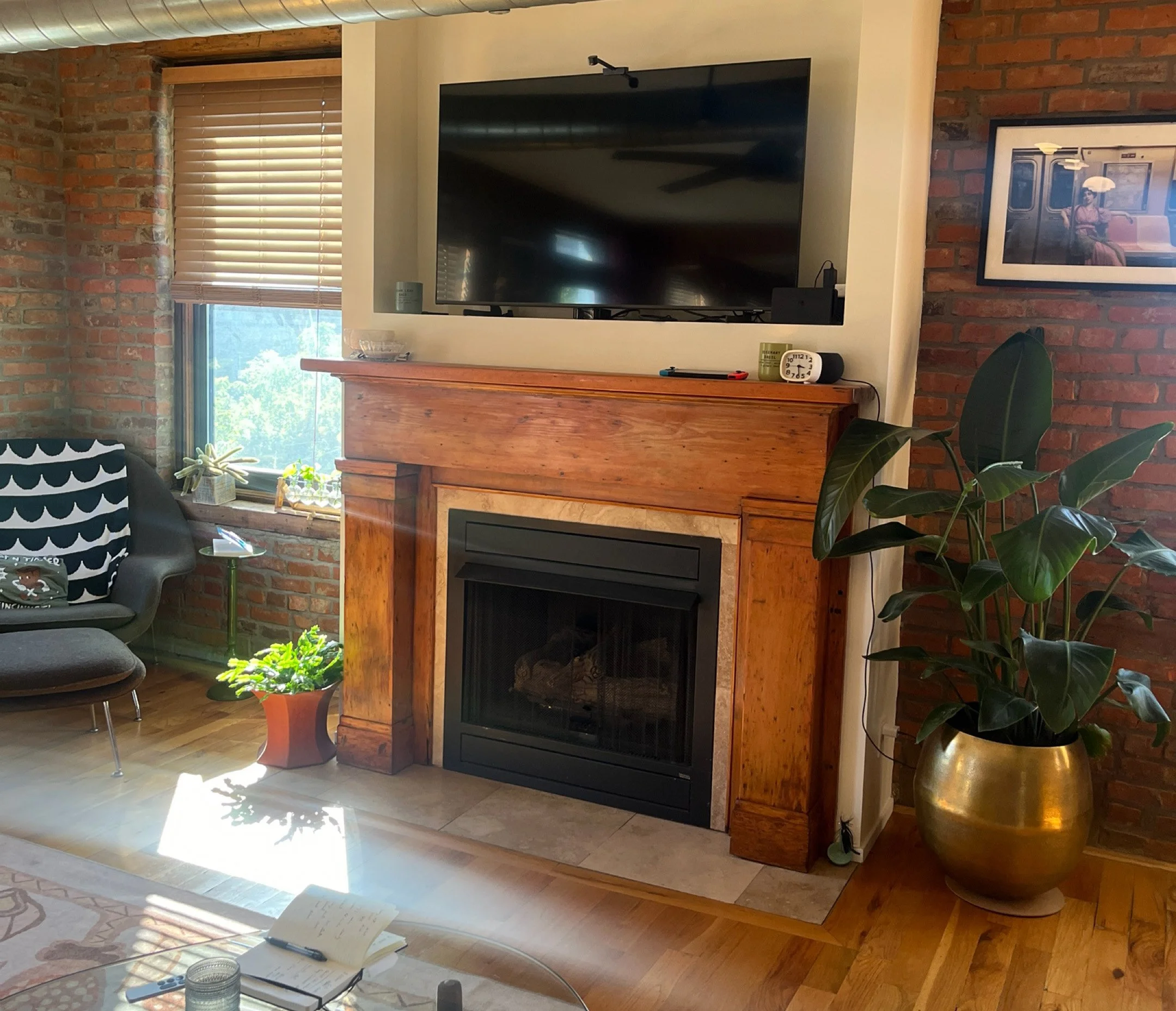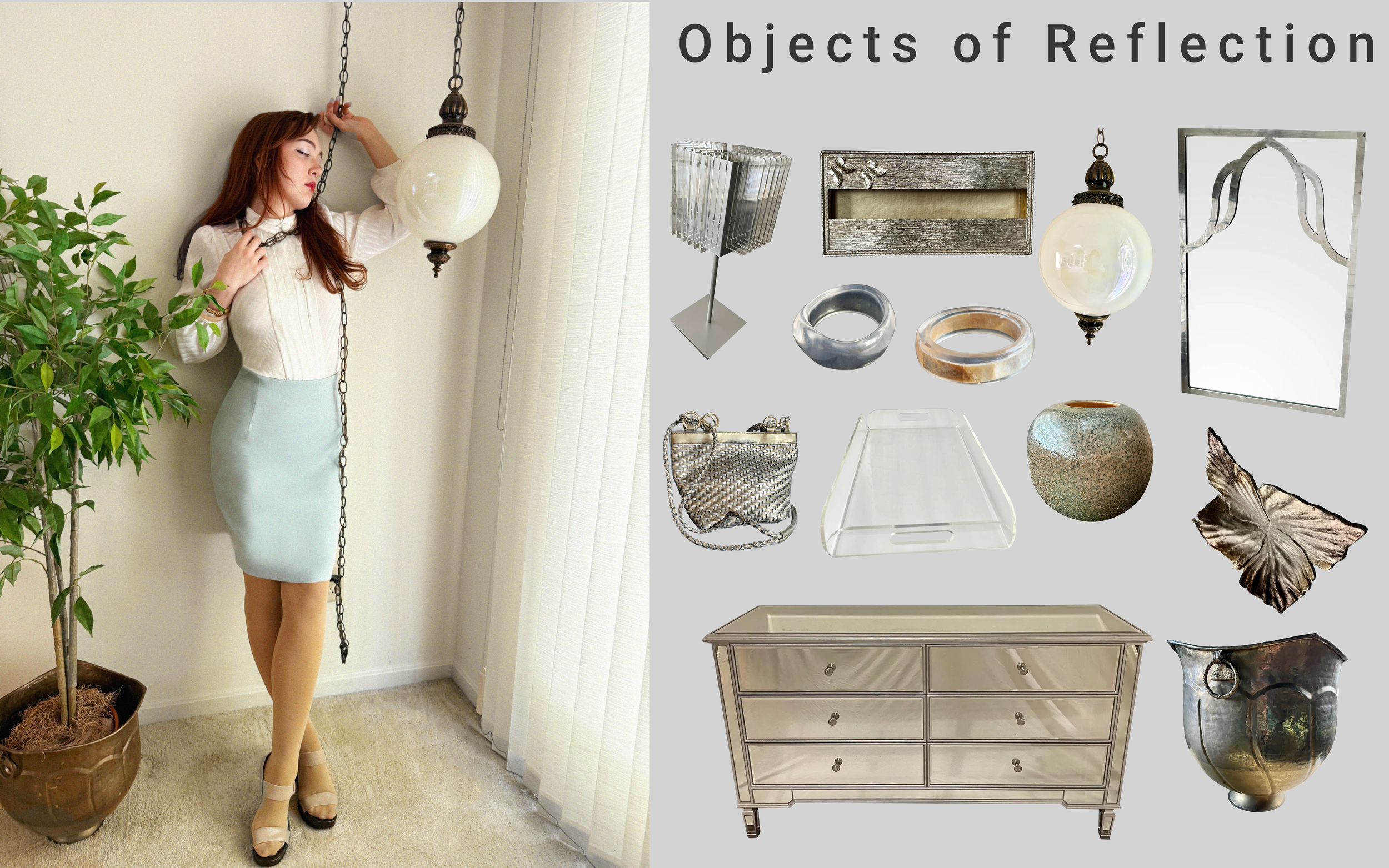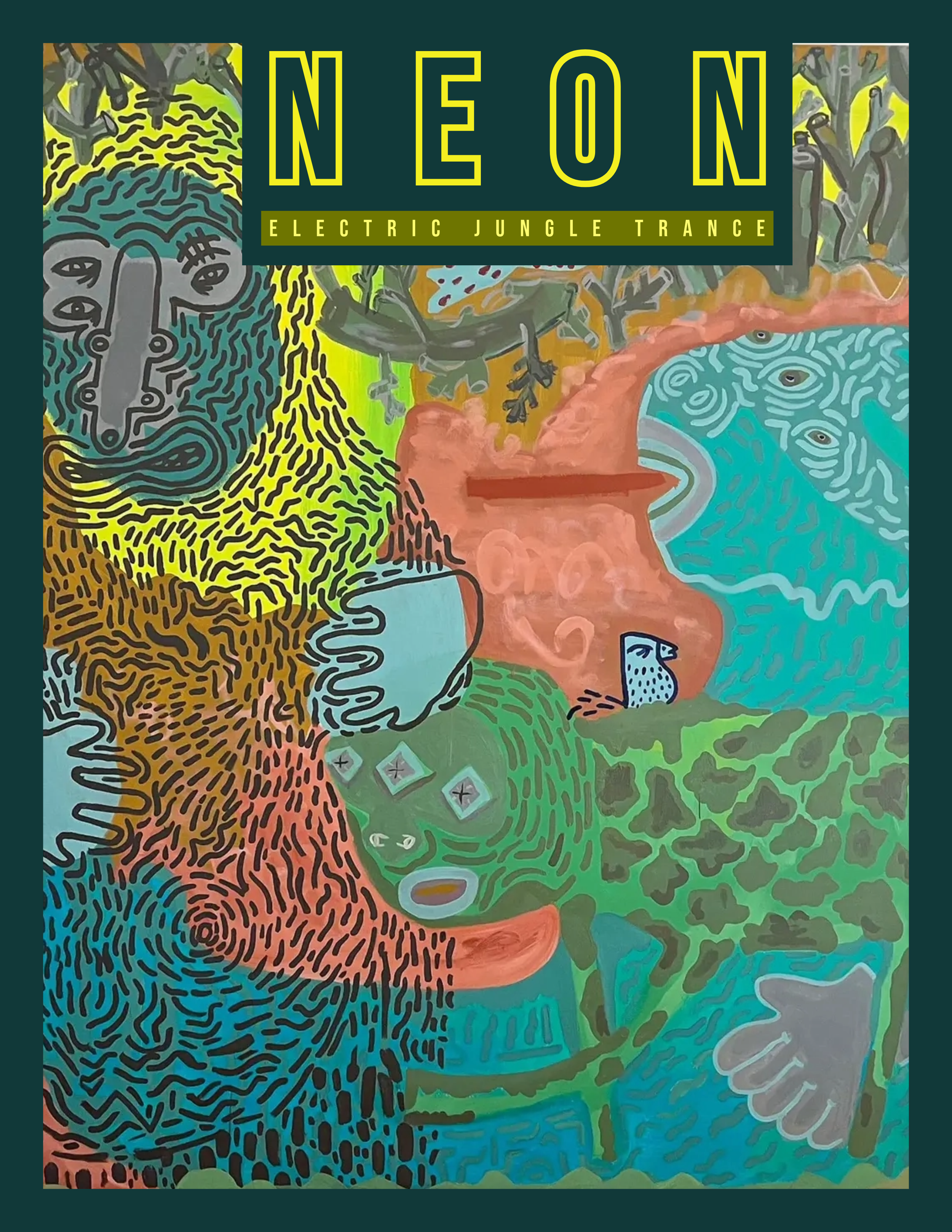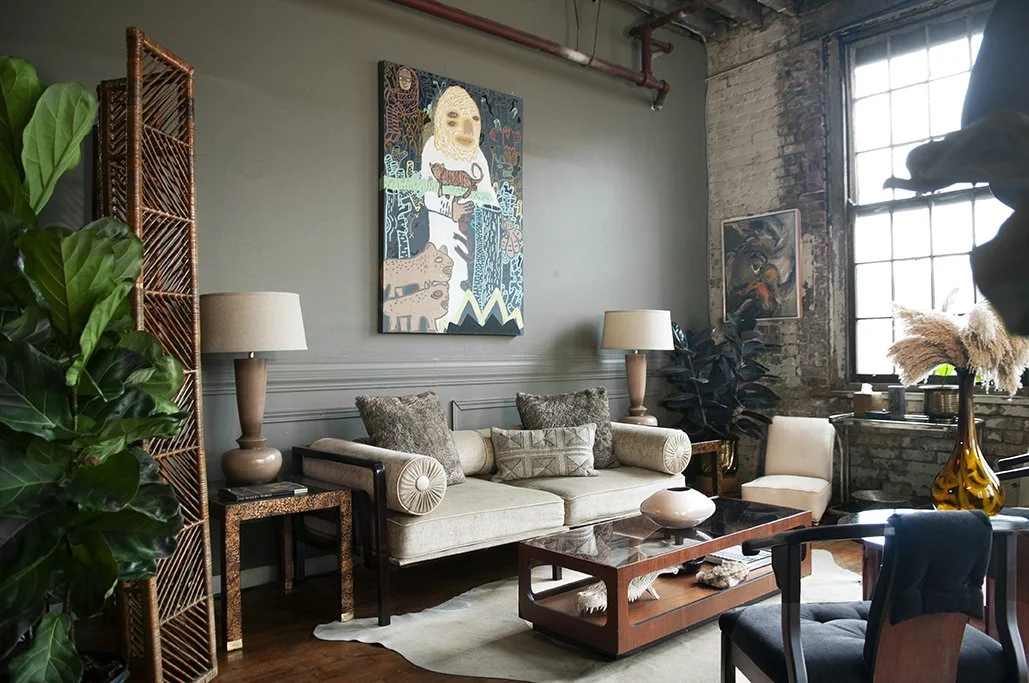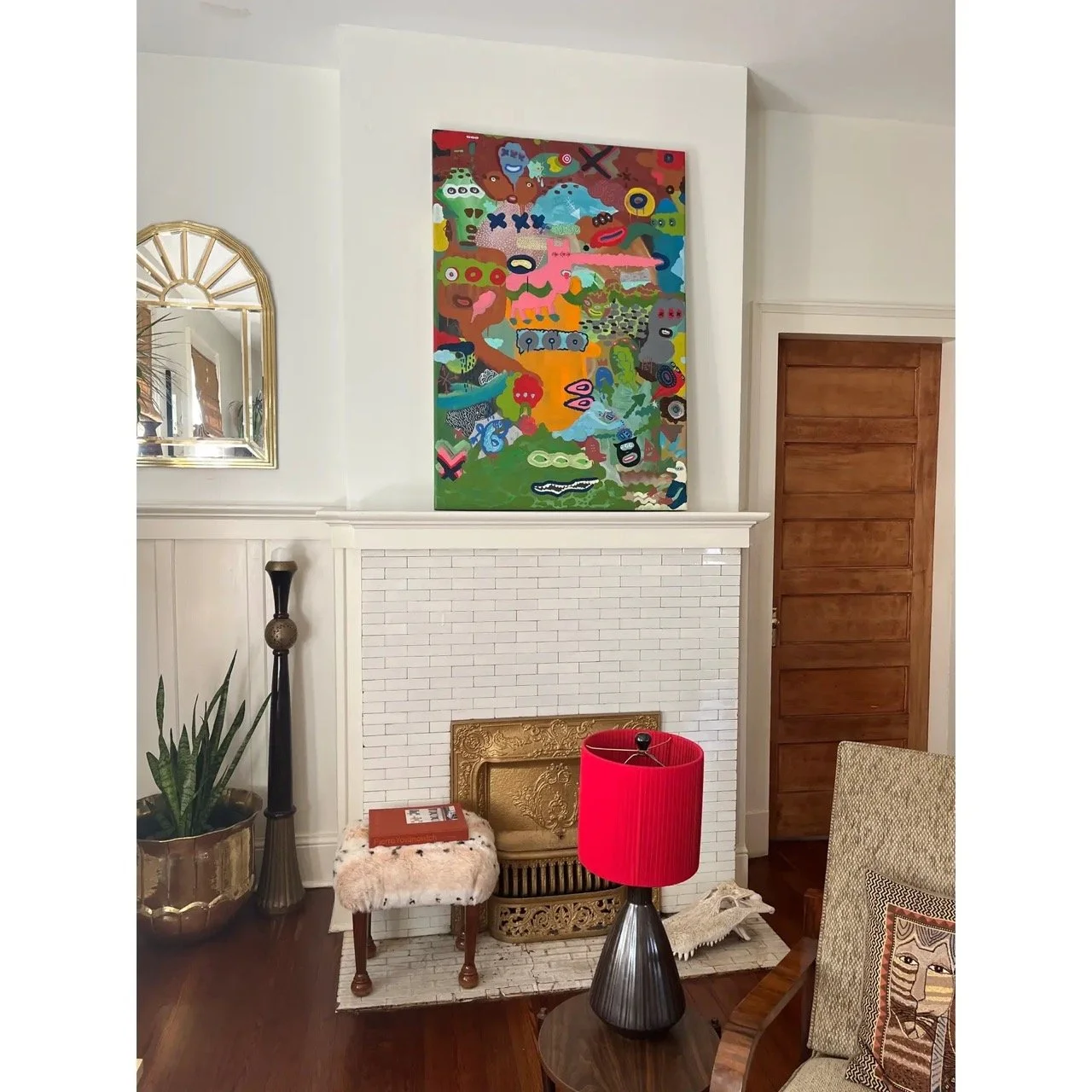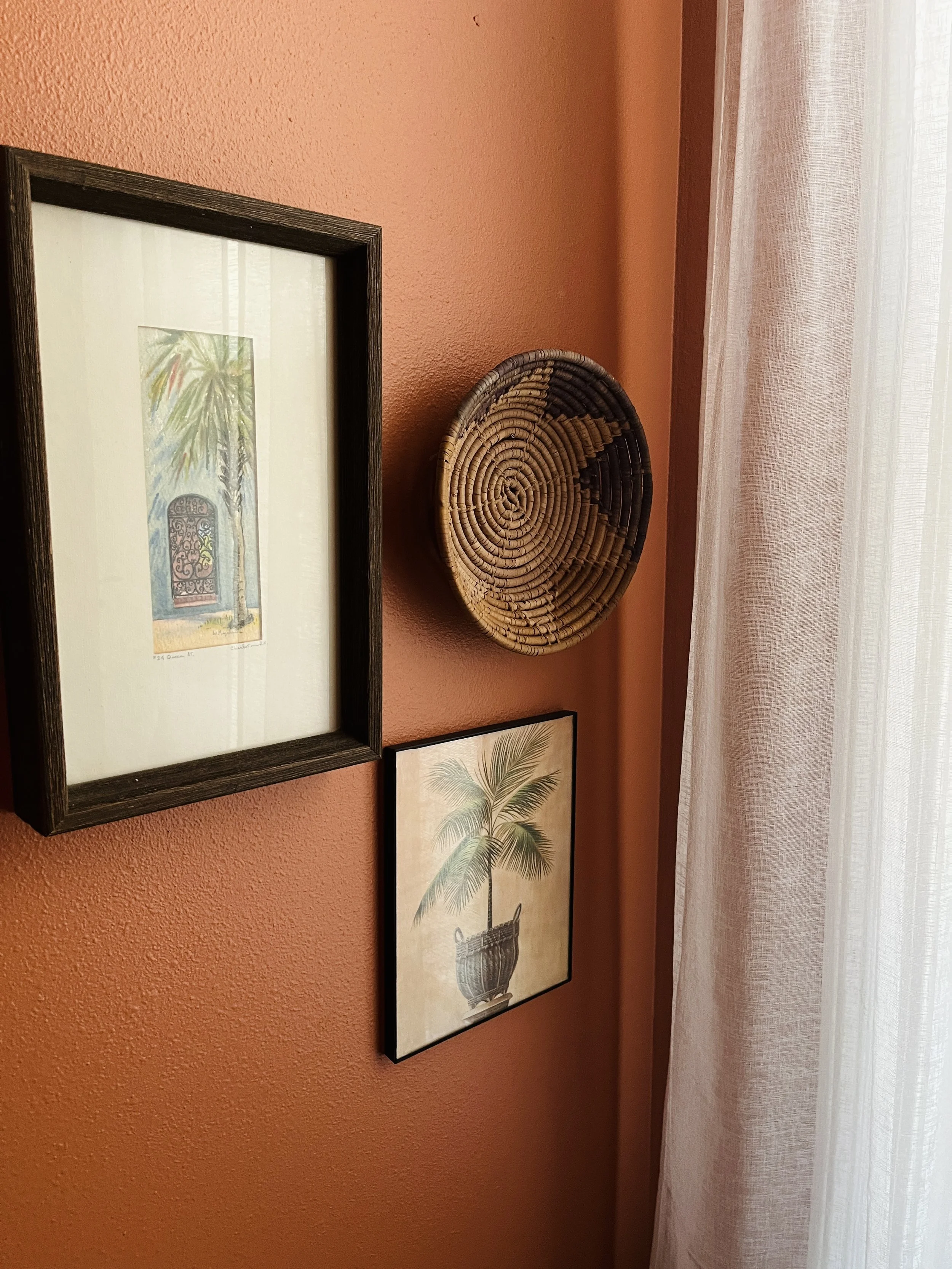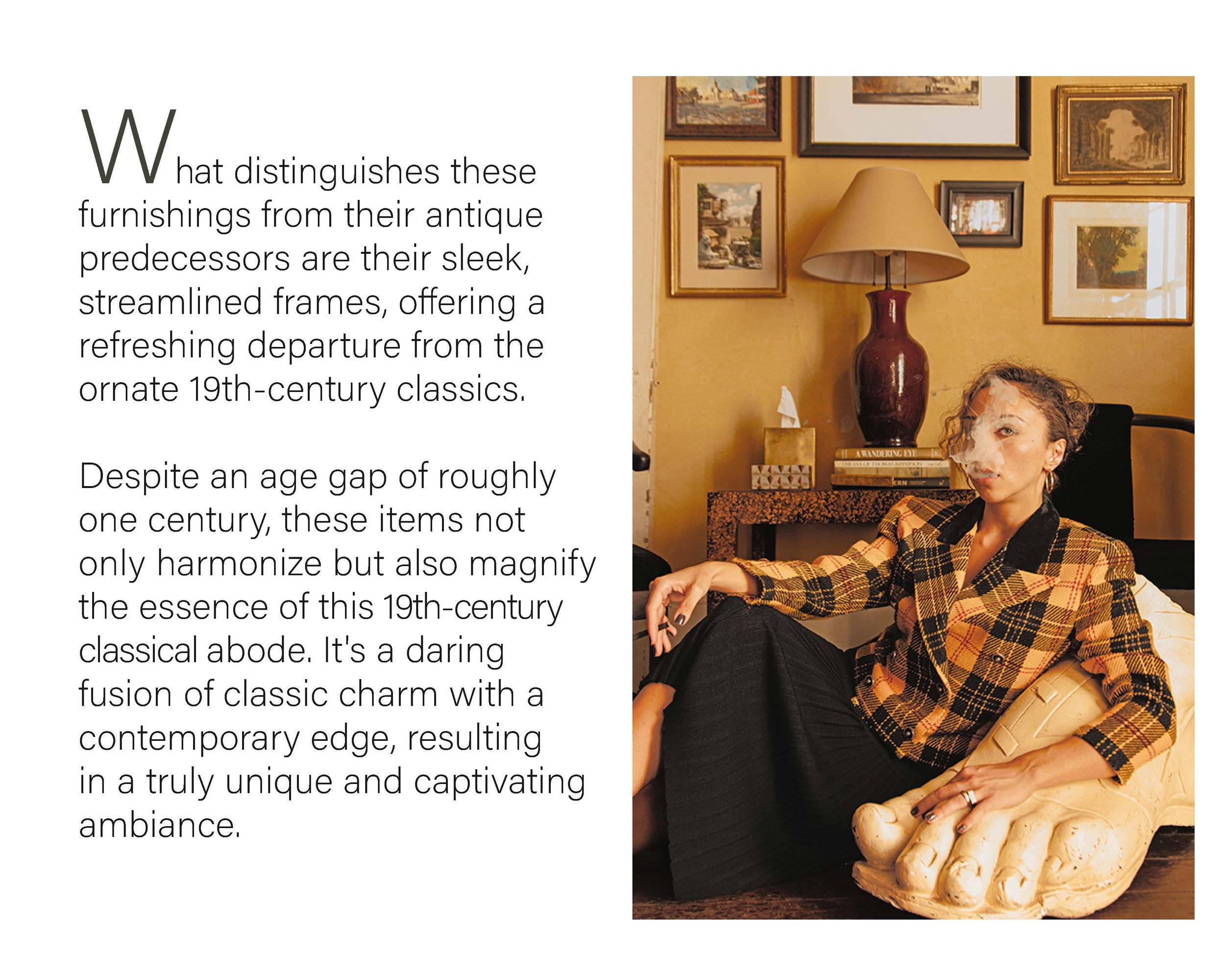Has Haggling for Vintage Fallen Out of Vogue?
Over the past few years, the culture of secondhand shopping has shifted. The thrill of haggling for vintage and collectible pieces is fading as buyers accept listed prices and online platforms make values more visible. Discover how competition, rising demand, and the investment potential of antiques and mid‑century furniture are changing the game for collectors, dealers, and enthusiasts.
Over the last few years, the dynamics of secondhand shopping have shifted. The thrill of spotting a hidden gem and negotiating a deal is fading. Securing a quality piece increasingly requires quick reflexes and sometimes paying closer to retail value due to growing competition. Luck still matters, but the days when skilled negotiations could yield a day’s haul of bargains are almost gone, as demand for pre-owned home and fashion items surges.
Haggling once defined the culture of secondhand shopping but today, that dynamic is becoming less common. Buyers are more likely to accept listed prices, a trend that began when pandemic related supply chain shortages made high demand items harder to come by. Due to increased demand, sellers now recognize they can hold firm,particularly as the internet provides near-instant market value information on platforms such as 1stDibs, Chairish, and Worth Point. More sellers understand the value of what they have, and everyone wants their share. Opportunities for informal negotiation exist, but the more competitive the market the longer dealers will hold out for premium offers.
Rare or designer pieces often retain or increase in value, functioning as tangible assets with measurable resale potential
The rise of structured online platforms has further reshaped the marketplace for collectors and dealers. Authentication, condition grading, curated listings, and secure online transactions make shopping for antiques convenient, appealing, and accessible to the general public. Demand currently outpaces supply, and multiple shoppers monitor the same listings simultaneously. Securing a coveted piece now often requires speed, decisiveness, and sometimes paying above the listing price before another buyer claims it.
This shift is also reinforced by the growing perception of antiques, vintage furniture, and collectible design objects as alternative investments, not just decorative items. As certain Mid-Century Modern pieces and well-documented antiques have shown strong appreciation, buyers have grown more comfortable treating these purchases as assets with clear investment and resale potential. In many cases, rarity, condition, and provenance allow select pieces to function as store of value, potentially outperforming traditional assets in desirability and resale outcomes.
Growth and scale have normalized value, leaving little room for traditional negotiation.
Secondhand markets are booming, and the data backs it. OfferUp reports that 93 percent of Americans bought a pre-owned item last year. Chairish and GlobeNewswire show resale of furniture and homeware growing rapidly, with no signs of slowing down. Global forecasts put the secondhand furniture market at USD 56.66 billion by 2030, up from 34 billion in 2023. Scale and visibility have normalized pricing, leaving little room for traditional negotiation.
The old treasure hunt thrill has not disappeared entirely, but what remains of it feels rare, strategic, and increasingly professionalized. So what does that mean for dealers, collectors, and enthusiasts? Expect to pay more especially for pieces that are rare, mint, limited edition, or scarce. Haggling is no longer the default and can be risky, potentially costing you the sale especially on fast paced platforms like Facebook Market Place. Next time you think about underbidding on a listing, remember someone else is already in the DMs, ready to act before you even hit send.
Are you a dealer, collector, or haggler? Share your experiences in the field below. Low-ball comments will be ignored.
Images and Text by House of No EraNO Holidays 2025 Gift Guide
The No Holidays Gift Guide 2025 helps you discover gifts matched to six distinct personalities. From collectors to maximalists, find the perfect style fit.
Six personalities, six impossible to ignore gifts. For the collectors, the maximalists, the effortlessly cool, and everyone in between. Which one do you identify as?
For the Powder Room Princess: Loves all things French, brunching with her girl squad, and only hunts at European flea markets for IG cred. The art in her powder room is worth more than most people’s entire inheritance. She has a champagne budget but a soft spot for granny-core. Always styled, always curated, and always leaving the rest of us wondering how she does it.
For the Baroque School Art Grad: Lives for patina, texture, and the thrill of owning something they can’t quite afford. Surrounded by objects that smell like old libraries and Italian espresso, more is more. Every object has a story that may or may not include late nights in a studio and ramen for dinner.
For the City Slicker: The person who lives life in fifty shades of grey, polished to a mirror shine. Knows the best rooftop bars in the city, only drinks cocktails served in architectural glasses. Monochrome is a lifestyle, precision is a personality trait, and they will silently judge your taste from across the room.
For the MCM Bro: The guy who thinks his apartment is a museum but also a vibe. He’s got opinions on teak and has caught feelings for Italian Bitossi pottery. He’ll explain why that Mario Sabot pod chair is “essential” while sipping single origin pour over from his Georges Briard low ball glasses. Everything is curated to signal taste and maybe, just maybe, make the rest of us feel inadequate.
For the Eclectic Girlie: Knows every thrift store in town and has receipts to prove it. She thrives on thrifting, collecting, and layering without rules. Vintage glass, chunky jewelry and patterned textiles are always in her TikTok hauls. Maximalist, messy and utterly hers with just enough impulse buys to keep it interesting.
For the Girl Who Has Everything: She probably has it all but I bet you she doesn’t own the Starbay Marie Galante vanity. Rare, luxurious, and unmistakably bold, it is a collector’s dream and a functional travel vanity in one. This is the piece that separates everyone else from the truly stylish. Be a somebody and own what no one else can have.
How to shop?
These pieces are already selling before I could publish this guide. The fastest way to secure them is on Chairish with shipping and white glove delivery options. For select vintage decor and furniture, you can contact No Era directly for exclusive pricing, local pick up, or shipping and delivery quotes. Make sure to check the locations on the listings, as cities and states vary.
Happy Holidaze!
Cozy, Layered & Collected
Cincinnati loft designed with vintage and Mid-Century furnishings, including Crate & Barrel modular shelving, Ello mirrored cabinets, Adrian Pearsall tables, Eero Saarinen and Vitra chairs, layered textures, and curated decor for a collected, cozy look.
A Cincinnati Industrial Loft Makeover
Exposed brick, ductwork, and wooden beams give this late-19th century Italianate warehouse plenty of structure and character. This impressive 1,400 square foot open-concept loft in Cincinnati’s historic Pendleton neighborhood has remarkable bones but lacked the softness and ambiance that make a space feel like home. While respecting the loft’s industrial character, I worked with my clients to add warmth and comfort to create a space that feels intimate and inviting. The result is a cohesive, relaxed environment where every element connects without feeling overly matched. Contemporary at its core, the design draws on timeless references, creating a layered and cozy atmosphere.
This Shlomi Haziza postmodern Lucite bar cart brings a fresh, unexpected contemporary touch to vintage furnishings and pairs beautifully with the large gold planter from Cb2
Charcoal became the foundation. Grey can often read flat, but here it grounds the space and complements the exposed materials while tempering the strong orange and red tones in the architectural elements. Pottery Barn’s Worn Black Velvet blackout curtains dress all seven oversized windows throughout the condo, visually softening the brick walls and creating a warm, enveloping feeling with the thick, lustrous textiles. The drywall around the fire mantle was also painted in a deep charcoal to rid the space of any stark whites while also allowing the wall and television to quietly recede.
Crate & Barrel’s Petrie Mid-Century inspired sofa anchors the room and is paired with Pottery Barn’s Reeva hand-woven rug, which we repeated in the dining area to unify the space. A pair of 1960s Adrian Pearsall side tables were found on Facebook marketplace and complemented their existing Pearsall coffee table, creating cohesion among the furniture. The vintage Vitra orange swivel chairs were a standout local find and also reintroduced warm tones from the mantle and exposed beams back into the design. The Carmen Table Lamps from West Elm were both practical and subtle; their scale made them feel secure in the walkway and allowed the other statement pieces to shine, while perfectly complementing the materials, colors, and overall style of the room. Here, the balance comes from mixing vintage and contemporary furnishings.
In an open loft, maintaining a cohesive design can be challenging. With few walls or architectural breaks, it can be difficult to anchor art and objects that give the space interest, character, and depth. To address this, we introduced Crate & Barrel’s Tate modular etagere, which serves as both functional storage and a visual divider. I curated every object on the shelves, sourced from local vintage dealers and my own collection, layering textures, colors, and forms to create moments of visual pause. By providing subtle partitions and a place to display curated decor, the etagere organizes the open loft into distinct areas while allowing personal, collected pieces to bring warmth, personality, and a sense of home.
The Vintage Italian Wall is one of the highlights of this loft, though the surrounding structural beams and mirrors made it next to impossible to photograph. We started with a distressed metallic wallpaper from Perigold to add subtle texture and a calming green tone. An Ello mirrored sideboard holds my client’s record collection, creating a striking focal point. To avoid covering the wallpaper completely, we styled the wall with Italianate mirrors and empty giltwood frames. Mid-Century Laurel lamps frame the mirrored cabinet, their symmetry echoed by matching brass champagne chillers repurposed as planters. This approach not only creates a fun, unique look but also protects the vintage Bose speakers from potential water damage.
Pine Mountain by Behr was the perfect color choice for this wall to balance the reds and oranges of the structural features.
In most homes, furniture hugs the walls, but in an open loft, every square foot matters. My clients had this darling vintage marble bistro table that I suggested floating in front of their second fireplace. This nook was tricky: the French doors to the bedroom sit right behind the seating, so we needed to fill the space without blocking circulation. This pair of industrial Crate & Barrel chairs, sourced secondhand, worked beautifully with the table. Mid-century style Pottery Barn hurricane lanterns were styled inside the open fireplace, while a surrealist painting by Detroit artist Sheryl Hebel hangs above. The Flax linen Roman shades from Pottery Barn created a subtle but elegant backdrop while functioning as privacy for the bedroom.
Mel, the pug, relaxes in a reading nook fitted with an Eero Saarinen Womb Chair, George Nelson’s Cigar Lamp and a Nero black marble tulip table from Crate & Barrel.
This vintage Turner Retro Mirror pairs seamlessly with the Claes Oldenburg “Double Punching Bag” lithograph on the exposed brick walls.
What began as an industrial warehouse loft dominated by brick and steel is now a cozy, relaxing home. The final result captures the warmth and comfort my clients wanted, without losing the grit and authenticity that made the space so compelling to begin with. We only completed the living room area, as my clients are selling their condo! Rumor has it there may be an option to purchase it furnished, since the design works perfectly for the space. See the listing on Zillow, and for more interiors that blend vintage and contemporary design, explore other projects by House of No Era.
In the Details
I wanted to incorporate my client’s love for pugs and found these adorable pug pillows on Etsy and mixed them with the Dien Lumbar pillow from Arhaus and Crate & Barrel’s Relaxed wash organic velvet pillows and Border Ink Black throw blanket.
Before vs. After
NON-TRADITIONAL DECORUM
House of No Era’s latest collection places traditional furniture in unexpected settings, mixing mirrors, brass, glass, and lucite with classical silhouettes and Postmodern forms. Explore via experimental video shorts or shop online.
House of No Era’s Fall 2025 Edit
House of No Era’s latest curation places traditional-style furniture in unexpected situations. Classical silhouettes are mixed with postmodern sculpted forms, while mirror, brass, glass, and lucite finishes define the collection. Every moment is deliberate, restrained, and slightly provocative, making familiar shapes feel new and alive. The collection is presented entirely through experimental video shorts in No Era’s signature art-house style, with new scenes dropping on Instagram throughout the month. Make sure you’re following along because you won’t want to miss this.
The collection is available for purchase online, while those in the greater Cincinnati area can make an appointment to shop the studio firsthand. Some of the collection has already been scooped up, so don’t miss out!
1. 1960s Oil on Canvas of Venice Canal Scene 2. 1970s Transitional Style Skirted Sofa 3. Plexiglass Waterfall Nesting Tables and assorted accessories
ABOUT
House of No Era is a multidisciplinary studio that blends visual art, interiors, and sound to create work that feels personal, deliberate, and unbound by trends. Based in Cincinnati with strong ties to New Orleans and New York City, the studio offers interior services including staging, styling, and sourcing, as well as vintage resale, fine consignment, and studio rental. The studio is open by appointment or online, with shipping and white-glove delivery available for clients outside the local area.
Art Direction, Wardrobe & Styling: House of No Era
Muse: Jess Parker
Nailing Graffiti Murals In Design
How do you work graffiti murals into interiors without overwhelming the space? Placement and balance are key. These bold, colorful murals can fit in both modern and traditional rooms when you consider scale, color, and texture. Learn how to style graffiti murals to make them a striking but harmonious part of your space.A fresh take on New Orleans STR design—no clichés, no shortcuts. House of No Era blends vintage sourcing, sustainable materials, and authentic style to create a tropical retreat that feels real, not staged.
Most people hesitate to bring graffiti murals into their interiors because they worry they will feel too loud or chaotic. Bold colors and large scale seem liable to dominate the room and limit future decorating changes. Some assume murals only belong in ultra modern lofts and cannot work in traditional or layered settings.
I assure you they can. Graffiti murals layer color texture and movement in ways that demand attention and shape a room’s personality. Unlike other art genres they carry a sense of rebellion and spontaneity that can’t be copied or faked. I am not saying murals are right for every home, however with intention and an understanding of scale, color, contrast and texture they can bring vibrancy to almost any space.
This is for those of you out there who love graffiti murals but fear they won’t work in their spaces.
PLACEMENT
Murals like these carry a lot of visual energy so where you install them matters. They work best in communal spaces like dining rooms, living areas or dens where movement and conversation happen. These canvases are not meant to fade into the background so avoid placing them in intimate or quiet rooms like bedrooms or studies.
Introduce Shape & Color
Visually, the mural should act as an anchor in the room, introducing bold shapes and colors or reflecting subtle tones already present in architectural details, furniture, or decor. We’re not talking about matching your art to your sofa, but the mural will be the dominant focus and naturally influence other choices in the space. That might mean repeating a color in small accents or balancing vibrant areas with neutral elements. The goal is a balanced relationship where the mural and the room feel connected without looking forced or overly coordinated.
NEGATIVE SPACE
Murals of this scale need space around them. It's recommended not to crowd them with other artworks or too much decoration that distracts or competes with it's strong presence. Give these canvases room to breathe and you’ll find that they will settle into the space.
PROPORTION & SCALE
When most people think of graffiti murals in interiors, they imagine clean white gallery walls with a Corbusier leather sofa and a Noguchi coffee table. While that is a cool, minimalist look, these murals are much more versatile. Believe it or not, they pair well with Victorian era furniture and architecture, which share a similar scale, weight, opulence, and presence. The proportions work because neither element feels delicate or secondary, creating a unique, timeless aesthetic.
Is Graffiti Just For The Streets?
What do you think about graffiti murals? Ready to bring one of these radical pieces into your space or do you still think they are for the streets? I have a collection of Pop Art Graffiti murals from contemporary Hungarian artists based in Budapest including Kovacs, Budha Tamas, and Ferenc Balint available for purchase. No need to import on a container from Europe. These works are ready for pick-up in New Orleans and Cincinnati with white glove delivery options for those outside local pick up areas.
Reach out if you are interested or need help finding and styling the right artwork for your space.
All images designed, styled, and photographed by House of No Era
Designing With No Era: Breaking Rules, Not Style
Short-term rentals often rely on generic templates or clichéd local themes, resulting in uninspired spaces. Competing with boutique hotels means embracing layered, authentic design with curated vintage pieces and global influences. This approach creates unique, memorable interiors that attract discerning guests.
Short-term rentals often fall into two predictable traps: bland, ready-made, corporate templates brought to you by Wayfair or DIY setups by novice STR hosts relying on tired local clichés. Both of these approaches yield generic, uninspired spaces. But what if a design refuses to play by those rules? This New Orleans Short Term Rental project breaks away from formulaic approaches and predictable design patterns. It’s a deliberate mix of eras, styles, and design that refuses to be pinned down to one moment or place.
My client wanted a space that felt authentic and unexpected. Rather than defaulting to mass‑market pieces, No Era handpicked every item through local marketplaces and independent vintage dealers. That organic sourcing not only grounded the design in real history but also ensured each element carried its own character—setting the stage for a truly one‑of‑a‑kind interior.
The living room design features a warm terracotta wall that sets a vibrant backdrop for a clean‑lined, second‑hand Mid‑Century Modern West Elm gray sofa. A black antique steamer trunk was repurposed as a coffee table, while this 19th‑century Turkish rug ties the room together with nearly the entire color story. Sculptural Arne Jacobsen–style Swan chairs in cowhide from No Era’s personal collection introduces an unexpected edge, and a mix of playful shapes and bold contrasts keeps the space feeling dynamic yet cohesive. The result feels collected and globally inspired, balancing warmth with visual energy.
“This reflects a strategy many boutique hotels use: favoring layered, globally inspired design over gimmicky themes.”
Carrying that same layered approach into the bedroom, mid‑century silhouettes meet Mediterranean warmth: terracotta walls and earthy linens hint at Spanish and Southwestern influences without overpowering the room. A simple wood bed frame and nightstand maintain a clean layout, while woven rattan accents and graphic pillows introduce a subtle nod to 1970s bohemian flair. The sun‑washed palette of natural materials and muted hues creates a seamless flow from the living room’s collected, unexpected mix.
This reflects a strategy many boutique hotels use: favoring layered, globally inspired design over gimmicky themes. This matters because short-term rentals now compete in the same market, where authenticity comes from thoughtful sourcing and intentional layering—not obvious regional motifs. With STR fees often matching boutique hotel prices but lacking their level of ambiance and design, the competition falls short. By combining unique pieces and diverse styles with purpose, rentals can stand out—offering spaces that feel personal, memorable, and free from cliché theming.
Achieving this level of design means moving beyond predictable formulas to embrace complexity without chaos. It involves choosing pieces with history and character, thoughtfully mixing styles and eras, and uniting everything under a consistent vision. This is the House of No Era approach: layered, lived-in spaces that defy categorization and avoid tired tropes—spaces that feel personal and timeless. It’s a way of designing that challenges conventions and invites authenticity at every turn.
New Orleans STR Design Without Clichés
A fresh take on New Orleans STR design—no clichés, no shortcuts. House of No Era blends vintage sourcing, sustainable materials, and authentic style to create a tropical retreat that feels real, not staged.
New Orleans is no stranger to spectacle. But when it comes to short-term rentals, too many lean into surface-level clichés—plastic beads, Bourbon Street posters, and loud color schemes that shout “NOLA” but say nothing about how the city feels. The truth is, the soul of New Orleans isn’t found in a Party City decor kit—it’s in the textures, the heat-soft colors, the sense of time slowing down just enough to let you breathe. That was the guiding principle behind a recent project: a Palm Regency-inspired short-term rental designed to feel like an actual retreat and not a tourist trap.
Instead of leaning on overused tropes, I built this space around what a trip to New Orleans should evoke: a tropical escape with character and ease. The palette, mint green, cobalt blue, soft pastels, and off-whites punctuated by black; offers a calming, sun-washed contrast to the city’s intensity. Materials like raffia, rattan, and woven textures keep it grounded, while subtle signs of age—some patina, a little wear—add the kind of authenticity that can’t be faked. Nothing is overly polished or staged; it’s meant to feel lived-in, relaxed, and real.
Nearly every piece was sourced locally and secondhand, from the vintage campaign trunk used as a side table to the sculptural postmodern bedside table lamps found through a local dealer. Sourcing locally takes more time, but it pays off. Beyond supporting New Orleans’ secondhand and vintage economy, it lets pieces with real stories find a new home. The original watercolor artwork anchors the room, tying the whole design together—far from generic, mass-produced wall art. A pre-owned West Elm sofa and coffee table, a Facebook Marketplace rattan headboard, and a desk and chair set with a past—all of it adds up to something far more personal and livable than anything flat-packed and mass-produced. And let’s be honest: clients are always more impressed when you say Crate and Barrel, Pottery Barn, and West Elm instead of Wayfair, Target, and Walmart.
The result is a Palm Regency-inspired space designed to help guests recharge, reflect, and escape—not perform a version of New Orleans that was never real to begin with. More than just good looks, these choices reflect a deeper commitment to sustainability, authenticity, and experience-driven design. You shouldn’t walk into a rental and feel like it was built to turn a quick profit. You should feel like someone thought about what it’s like to stay there. That’s what makes people return—and what sets truly well-designed rentals apart in a city where hospitality is the culture.
Designed, styled, and photographed by House of No Era, this Mid City short-term rental reflects a commitment to authentic, sustainable interiors that honor New Orleans’ unique spirit.
Designing a Miami 1970s Coastal Postmodern Condo
As summer settles in, it’s the perfect time to bring a fresh, coastal vibe into your space. This Miami-inspired design shows how light, natural materials, and greenery come together to create an airy, grounded atmosphere—no matter where you live.
When designing for a coastal city like Miami, you have to consider more than just style—you have to think about how the light hits, how the heat lingers, and how the energy of the city flows through a space. This project reflects my love for Miami’s coastal style and Italian postmodernism. For this small Miami condo, the palette, materials, and layout were all shaped by that reality: intense sun, limited square footage, and a need for levity. The result is a space that feels both grounded in its environment and translates beyond Miami because its focus on light, scale, and material addresses universal design challenges.
We kept the bones simple—white stucco walls and terra cotta tile floors, both classic Miami 1970s elements. The living room was tight, so we leaned into scale and lightness. A Jack Lenor Larsen petite sofa in beige, white, and black grid graphic upholstery anchored the seating, paired with a smoked glass lucite coffee table that kept the center open and reflective. A 1970s beveled mirrored panel behind the sofa amplified the daylight, nodding to Miami’s Art Deco roots without feeling literal. Overhead, a white MCM globe swag light floated above the coffee table—using ceiling space instead of crowding the floor.
Storage was an issue, especially with a long narrow hallway leading into the dining area. Instead of trying to force more furniture, we used a two-piece Milo Baughman chrome étagère that spanned nearly the entire wall—functioning as both storage and display. This let us keep the kitchen clear of clutter while giving personality to a tight transition space.
Mirrors play a key role throughout the space, amplifying light. A large octagonal mirror in the dining area worked double-duty, reflecting the condo’s only real natural light source: a kitchen window. A whitewashed pencil reed nightstand was repurposed as an entryway table as its scale and texture blended perfectly, while adding additional storage. In tight corners, postmodern burled wood and mirrored pedestals function as lamp tables and plant stands. Art was kept minimal to maintain openness—one notable piece is a 1970s charcoal abstract watercolor framed in sage green and chrome, its shape and tone complementing a nearby 1970s brass rectangular mirror.
The color story is grounded in white, terracotta, chrome, sage, smoky amber, reflective materials, and natural wood tones. Paired with plants, it feels airy but rooted—coastal without clichés. No blackout curtains or heavy upholstery—instead, materials that breathe, reflect, and expand a room. Even if you’re not designing in a coastal city, this approach translates: work with light, scale, and reflective surfaces, add big healthy tropical plants, and you can create your own Miami oasis wherever you live.
NO THANKS
House of No Era’s “No Thanks” campaign takes a bold approach to holiday marketing by rejecting cliché and focusing on authenticity. Blending vintage tabletop pieces with a mix-and-match aesthetic, the campaign highlights quality and individuality over gimmicks. It’s a fresh take from a Cincinnati-based studio that values real storytelling and design with purpose.
At a time when holiday marketing leans heavily on sentimentality and sameness, House of No Era took a deliberate detour. “No Thanks” wasn’t designed to reject tradition for the sake of rebellion—it was about clearing space for something more intentional. Instead of pushing products with artificial urgency or nostalgia-drenched language, the campaign offered a different rhythm: a surrealist dining collection rooted in quality, contrast, and character. No gimmicks, just good design, presented with clarity and a sense of humor.
Pulling from mid-century ceramics, hand-thrown pottery, and sculptural glassware, the edit told a story through objects—not just about aesthetics, but about autonomy. Figurative pieces added quiet tension to the table, while mixed glassware sets encouraged customers to think outside the matching set. The result? A table that felt real, personal, and actually usable—something that could work just as well on a random Tuesday as it could for a quiet Thanksgiving for two.
“No gimmicks, just good design, presented with clarity and a sense of humor.”
The broader message was simple: you don’t need to perform the holidays to participate in them. “No Thanks” offered an alternative for those who see design as an extension of values, not just visuals. And in doing so, it reminded us that authenticity can still be aspirational—just not in the way most marketing decks would have you believe.
Redd Theory: An Exploration of Art, Fashion and Design
Redd Theory is House of No Era’s latest visual campaign—an experimental collision of fashion, performance, and design. Featuring Detroit-based artist Redd and photographed by Charles Nnamdi, the project reframes iconic vintage furniture as collaborators, not props. Set in a charged palette of reds and earth tones, this collection pushes the boundaries of styling, storytelling, and the role design plays in movement and identity.
Every time I produce and art direct a campaign for No Era, the artist in me is always asking: How can I push these concepts further? How can I make them bolder? No Era’s latest project answers these questions with striking intensity, thanks to the extraordinary talent behind this provocative work. I present to you Redd Theory: An Exploration of Performance, Fashion and Design.
Redd, a Detroit-based performance artist, takes center stage in this collaboration, wrapped in electric red—a hue that mirrors their bold fashion sense and fierce artistic expression.
Redd's attire becomes an extension of their persona—an avant-garde blend of striking silhouettes and captivating accessories. Redd moves fluidly through a curated set of iconic, high-design furniture—from the Pierre Paulin Ribbon Chair to the Verner Panton Cone Chair—each piece stands as a testament to design history. These objects are not props; they’re significant works of art.
Captured at Nfinity Studios in Cincinnati, photographer Charles Nnamdi brought his keen eye to the project, imbuing the visuals with high-energy creativity. His expertise in fashion photography elevated the narrative, drawing out the dynamic interaction between performance and design in a way that feels both striking and harmonious.
My creative vision for No Era has been clear. It’s about creating a dialogue between fashion, performance, art, and design. Collaborations like this are an invitation to reimagine how furniture and design are presented and discussed, while challenging the spectator to reconsider the roles of both. This approach elevates each medium into something more fluid and alive.
Thanks to the incredible talent of both Redd and Nnamdi, the result is a compelling visual narrative that not only communicates this message but also stands as a stunning work of art in its own right.
Collaborations like this are reshaping independent partnerships, connecting cities, and sparking creative exchanges, and No Era has been ahead of the curve in this evolution.
Magazines are no longer at the pulse; we, the independent creators, are igniting change and driving this momentum forward. Support living artists, and let’s mob!
REDD THEORY
This curated collection of vintage designer furniture, objects, and art captures the essence of the enigmatic Redd. These pieces showcase a striking color story of bold reds contrasted against organic earth tones, enhancing their sculptural and biomorphic shapes.
The Redd Theory collection is available for local pick-up in Cincinnati or can be purchased online via Chairish, with White Glove Delivery service for those outside the Cincinnati area.
Photo by House of No Era
Drop Me A Line!
Whether you want to share your thoughts on this collaboration or are eager to elevate your space, I’d love to hear from you.
No Era provides personalized interior design services tailored to your vision and is also accepting new consignments of unique vintage furniture and art from clients across various locations. You can also book your next production at my Cincinnati Studio.
Drop me a line, and let me know what you've got going on!
Attribution
Art Direction & Concept: House of No Era
Talent/Wardrobe: Redd
Photography: Charles Nnamdi
Location: Nfinity Studios
Set Design: House of No Era
URBAN LOFT-STYLES
Sculptural vintage furniture shapes the character of a sunlit industrial loft. With open layouts and historic windows, the space balances raw architecture and curated design, where styling becomes a form of spatial expression.
Photo by House of No Era
Foreword
Here, it's nearly impossible for a collection to fall short of striking. The exposed brick, hardwood floors, open ceiling beams, and oversized historic windows, bathed in natural sunlight, make this space a dream that once defined the '90s Architectural Digest aesthetic.
From the bold contours of the sculptural Brown Saltman Sofa to the airy minimalism of the Italian Zermatt Sling Bench, and the unexpected occurrence of old-world tradition found in the Hollywood Regency Silk sofa, the open layout allows each piece to assert its own presence in this loft space. Majestic fig trees serve as natural partitions, while vintage folding screens add structure and definition, creating an environment full of artistic potential.
As you explore the limitless possibilities of working within such a space, the question I leave you with is: What is your Loft-Style?
(Watch Janie in "Last Daze of Summer”)
Photo by Kayla Palmer
Italian Airport Lounge
In this loft, stark concrete walls and exposed beams are softened by the buttery leather of this sleek Italian Zermat Sling Bench. It’s architectural steel frame mirrors its industrial surroundings, while repeating geometric forms and warm wood accents add a keen mid-century atmosphere. This moment, reminiscent of a suave 1970s Italian airport lounge, takes us back to a time when flying was still glamorous.
(Watch Postmodern Pink Leather)
Photo by House of No Era
Photo by Kayla Palmer
Urban Escapes
Outdoor spaces hold immense value, especially in the heart of a big city, where a fire escape often doubles as an extension of your living room. Countless moments have been shared on these cleverly outfitted, plant-filled “balconies” in Brooklyn, Manhattan, and Queens. I’ve seen some impressive setups from back in the day. Things were different back in Y2K. While we appreciate the creativity behind this, No Era strongly advises against decorating fire escapes due to serious safety hazards. For now, let’s just imagine the possibilities.
(Watch Kendra in “Elevator Art”)
Photo by Kayla Palmer
Photo by Kayla Palmer
Tradition in Transition
This Hollywood Regency gold-striped silk sofa introduces a shimmering counterpoint to its raw industrial surroundings. Framed by a vintage rattan folding screen, the sofa becomes an even more dramatic centerpiece. The screen's intricate weave anchors the space, drawing the eye and grounding the sofa within the open-concept layout.
Photo by House of No Era
Refined Futurism
Vintage doesn’t have to look “vintage.” At No Era, the mission isn’t to mimic the past but to integrate its relics into the future. Take this 1950s Brown Saltman Sofa—its sculptural form feels ahead of its time, a nod to space age futurism. Paired with a Lucite globe, a postmodern twist on a classic, this collection doesn’t just span decades; it bends time. How do you envision your future?
(Watch What’s Your Next Move?)
Photo by House of No Era
Reel Them In: The Power of Video in Crafting Brand Stories
Exploring how experimental video shorts can shape brand identity through visual storytelling. A look into House of No Era’s Haunted Graffiti campaign.
Video, as a medium, offers a unique, immersive experience that is unparalleled in its ability to engage audiences. This medium is particularly potent for visual brands like No Era, who specialize in vintage home goods and products. For example, each item offered by No Era is not just a product; it's a piece of history with its own story. Video reels are the perfect format to bring these stories to life, allowing them to be both honored and re-imagined for today's world.
In a digital landscape filled with standard advertising, storytelling stands out. It's about making a lasting impression and creating content that resonates with viewers long after they've watched it. For No Era, the goal is to craft narratives that invite the audience into a world they can experience and connect with, to create moments that are not just seen but felt. This approach not only enhances brand identity but also engages audiences on a deeper level. By harnessing the power of video, any brand has the potential to significantly leverage their presence, transforming their story into an impactful and memorable experience.
Interested in learning how No Era's storytelling approach can elevate your brand? Connect with me to explore how we can craft unique video reels that bring your narrative to life.
Present Tense: Experimental Product Video shot & Edited by House of No Era
Rethinking Rentals: No Era's Vision for a Sustainable Stay
No Era challenges common critiques of short-term rentals by integrating sustainable practices and local culture into thoughtfully designed spaces. This approach supports local economies and offers travelers unique, responsible stays that go beyond the usual lodging experience.
STR Design, New Orleans by House of No Era
(Originally published January 2024)
Short-term rentals often get a bad rap, criticized for their perceived negative impact on housing markets and community dynamics. This portrayal overlooks the potential for short-term rentals to serve as a conduit for economic and sustainable development when approached thoughtfully. Recognizing an opportunity to pivot this conversation, No Era has been at the forefront of a trend that harmonizes short-term lodging with community and sustainability values—a movement that breathes new life into the ecosystem of local economies while championing environmental stewardship.
At No Era, there is a quiet yet firm commitment to re-imagining the business approach to short-term lodging. By thoughtfully selecting second-hand, quality furnishings, often from reputable brands, the focus is on creating a circular economy. This approach not only recycles valuable resources but also supports the local economy by channeling funds back into community and small businesses instead of impersonal corporate conglomerates. Spaces are thoughtfully curated to truly reflect the character and culture of the city, attracting discerning guests who appreciate the uniqueness of their accommodations. This method showcases a path where short-term rentals not only coexist with but also contribute positively to their communities.
In curating spaces that reflect the local ethos, No Era contributes to a different narrative for short-term rentals: one where each stay enriches the visitor's experience and supports the city's economic health. These are not merely transient spaces but homes that tell a story and inspire guests to engage with the culture around them. In doing so, No Era demonstrates that short-term rentals can indeed harmonize with the city's rhythm and bolster local economies, all while steering the real estate narrative toward a more inclusive and positive horizon. No Era is not just following a trend—it's setting one, illustrating that thoughtfully designed spaces can create a ripple effect of positive outcomes for local economies and the short-term rental market as a whole.
If you're intrigued by the prospect of distinctive and responsible short-term stays that celebrate and sustain local culture, I invite you to connect with me. Witness for yourself the spaces where every detail tells a story, and see firsthand how No Era is shaping the future of mindful travel.
Pay to Play: The High Price of Social Media
Explore how social media algorithms on platforms like Instagram and YouTube affect authentic content and challenge small businesses. Understand the shift from organic reach to paid visibility and its impact on creativity and engagement.
35mm Film Still by Carly Sioux
In today's media landscape, authenticity is more than a buzzword—it's a necessity. Especially on platforms like Instagram and Youtube that have become inundated with pay-to-play ads, sponsored content, and corporate behemoths, making social media no longer social... or original for that matter.
“Social Media is choosing content for us in a massive cultural phenomenon of gaslighting.”
It's no longer enough to engage and interact with the posts we want to see; Social Media is choosing content for us in a massive cultural phenomenon of gaslighting. Users are led to believe that their engagement will shape their feed, but in reality, the algorithms prioritize and manipulate our perception of what is popular, important, creating an illusion of choice.
The rise of algorithms has fundamentally altered how content reaches audiences and how smaller artists and businesses connect with their actual following. Genuine posts often struggle to surface without financial boosts, relegating them to complete obscurity. Despite their efforts, many individuals find themselves criticized by experts for not achieving desired outcomes. This critique often points to perceived issues with quality and consistency. Magazines, once bastions of editorial integrity, now monetize their platforms under the guise of 'collaboration,' blurring the lines between paid visibility and sincere storytelling, further altering our perceptions of what's relevant.
“Algorithms are like toxins—buzzwords that no one seems to be able to actually define, yet so many experts claim to understand.”
35mm Film Still by Carly Sioux
So what is the solution if we can't teach the algorithms to work with us and instead they work against us? It's disheartening for many smaller businesses like No Era, which have completely built their brands on platforms like Instagram. Do we revert to paper trails and handwritten letters? I know my email campaigns are far more effective than anything shared on Instagram. It feels like we've been trapped in their dopamine-driven click-bait cycles and left out to dry. If you're not there, you don't exist, yet we're kept in an endless loop of maniacal posting to keep our heads above water treading in the social currents. This leaves many burnt out, underappreciated, and robbed- literally, since so many celebrities and larger businesses mine ideas from smaller content creators.
Initially, social media had the potential to revitalize capitalism by empowering smaller businesses with limited capital or extensive advertising budgets to connect authentically with their own local audiences. It offered a pathway for individuals to bootstrap their ventures and create sustainable business practices. However, as companies like Meta recognized a missed opportunity to profit from small businesses achieving organic success, they dismantled this 'viral phenomenon' and blamed our failure to have visibility on our alleged shortcomings. Algorithms are like toxins—buzzwords that no one seems to be able to actually define, yet so many experts claim to understand.
I don't claim to have the answers, but I do hear a growing chorus of voices tired of superficial content and the relentless pressure to post incessantly to achieve 'success.' This sentiment is exacerbated by platforms like Meta, which use AI to mine our posts, enabling others to shape their brand identities and personalities at the expense of those unwittingly being turned into content creation assembly lines. It's almost as if they've established a content creation sweatshop, exploiting individuals already marginalized by these online corporate media practices. Original ideas and creativity are the most valuable assets, sought after by corporations for their own gain. So be careful who you send that pitch letter to.
Is There Room for One More at the Creative Table?
In the interiors and branding space, collaboration over competition drives stronger creative outcomes. This article explores how a collective approach fuels innovation, supports growth, and builds a more inclusive, future-focused design industry.
Painting from Miami Art Week, 2023 by Ismaele Nones
Photographed by No Era
In creative industries, the notion of collaboration over competition is not just an ideal; it's a powerful catalyst for innovation and growth. Why view another's brilliance as a threat when it can be a monumental asset?
Each of us brings a unique set of skills, perspectives, and experiences to the table. When these individual talents are viewed through a lens of competition, opportunities for growth and innovation can be inadvertently stifled.
In contrast, embracing a collaborative mindset opens up a world of possibilities. It allows for the exchange of ideas, fostering an environment where creativity is not just about individual achievement, but about collective progress.
In creative fields, true success is not just measured by personal accolades but by the ability to contribute to and elevate the collective body of work. When we shift our focus from competing to collaborating, we create a space where creativity flourishes, ideas multiply, and everyone benefits.
The big picture is not about outshining each other, but about shining together, creating a brighter, more innovative future for the industry. By championing collaboration, we advocate for a more inclusive, dynamic, and progressive industry. It's about thinking big, beyond the confines of individual achievement, towards a future where collective creativity leads the way.
Thoughts?
Protect Your Selfie: The High Price of Digital Entrepreneurship
In a digital era shaped by algorithms and AI, No Era's ‘Faceless’ campaign pushes back against the pressure to market ourselves instead of our ideas. By choosing anonymity over exposure, the campaign challenges the growing trade-off between visibility and privacy, questioning what we lose when identity becomes currency in the entrepreneurial world.
35mm Film Still by Carly Sioux
In an age where digital footprints are as significant as physical ones, I embarked on a 'Faceless' marketing campaign for my brand, No Era. This journey began as a bold statement against the digital era's invasive algorithms, which often encourage overexposure and oversharing, through selfies and the relentless push to sell ourselves rather than our ideas. A scenario in which we are coerced into being the front-and-center of our marketing narratives, often at the expense of our concepts, ideas and privacy.
When I started this concept two years ago, little did I realize how prescient this move would be in today’s AI-driven world, where the manipulation and distortion of identity pose serious consequences. The digital world today is not just about connectivity and convenience; it's a complex battlefield for identity and privacy. In this context, my marketing experiment was not merely an aesthetic choice but a strategic maneuver, addressing the growing concerns about how technology influences and sometimes distorts personal identity and anonymity, and the way we market our ideas.
Headless Headshot by House of No Era
Sometimes, the most powerful statement we can make is what we choose not to reveal.
This evolution points to a significant shift: Privacy is becoming a luxury, and so is the ability to market something beyond our own personas. In the entrepreneurial landscape, where personal branding is often conflated with business success, choosing to focus on ideas rather than self-promotion becomes a radical and revealing decision. It suggests that there might be value in mystique, in holding back, and in protecting one's digital identity as fiercely as one's intellectual property, while challenging the algorithm-driven narrative that visibility and personal branding are paramount.
So, as entrepreneurs in an era where AI and algorithms hold sway, we must ask ourselves: What is the price of our privacy? How much of our personal identity are we willing to trade for success? And perhaps most importantly, how do we navigate the delicate balance between visibility and vulnerability?
Still from "Coastal Alien" Design Campaign by No Era
Retro Reprice: The Covid Effect
Retro Reprice: The Covid Effect was originally published January 2024. It explored how pandemic-era demand reshaped the vintage market—and raised questions about value, pricing power, and who gets to charge premium rates. With everyone aiming for top dollar, the lines between resale, curation, and professional service got increasingly blurred. A year and a half later, those tensions still echo across the market.
"People like you are ruining the vintage market." That stinging comment directed at me on Facebook Marketplace made me pause and reflect. The vintage market has indeed transformed, especially noticeable post-COVID. The pandemic sparked a unique fusion of increased home-focused activities and halted furniture production due to safety measures. This period also saw a rise in people turning to side hustles. Amidst this, influential voices like Vogue Magazine and Architectural Digest declared vintage and antiques mainstream, thus reshaping the market's dynamics.
The stark contrast in pricing is most apparent on platforms like Facebook Marketplace and local thrift stores, where figures have skyrocketed. This trend begs the question of the rationale behind these prices, particularly from Instagram sellers, furniture flippers, and low-frills thrift stores. My experience at an antique mall in the middle of nowhere Mississippi vividly illustrated this point. Amid the sweltering southern summer heat, dusty shelves, and cramped, unventilated spaces, I found items priced similarly to those in my own well-curate and heavily marketed shop, situated within a magazine-worthy space. This incongruity highlights a disconnect; many still struggle to understand the evolving norms of the vintage market, where unpolished, hard-to-navigate spaces are demanding premium prices. Another dealer I visited recently in Dayton, Ohio, with a warehouse crammed with common vintage items like Hallmark and Precious Moments figurines, priced at $35 each, exemplifies the market's shift.
Styling and Photography by House of No Era
“What dictates the perceived value of a luxury shopping experience? Does the platform, be it online, in-store, someone's storage unit or at a flea market, sway your perception of an item's worth?”
This pricing seems overly ambitious. It showcases an emerging trend where even the most commonplace vintage items are fetching premium prices, regardless of their setting, value, or presentation in the market. Goodwill, traditionally a haven for thrifty finds, has also adapted. Their platforms like shopgoodwill.com and their online auction site feature items at significantly higher prices than what we were accustomed to pre-pandemic. This change not only mirrors the broader market's trajectory but also illustrates the changing perception of value in the secondhand goods sector, where previously affordable finds are now premium offerings.
“Being a professional in this field means managing costs that go far beyond the initial price of an item. The reality is, acquiring a chair for $100, per se, doesn't mean it costs $100 to sell it.”
One thing is certain: the heyday of thrift hunting is over. As a dealer, it’s now more crucial than ever to establish direct contacts with liquidators, wholesalers, and other industry professionals, as well as with individuals eager to offload their personal possessions, effectively bypassing public second-hand marketplaces. But this still leaves us with the million-dollar question: how should pricing be approached in this new era? This is a common question I hear from newcomers in the vintage resale scene. The answer lies in what the market will bear. What dictates the perceived value of a luxury shopping experience? Does the platform, be it online, in-store, someone's storage unit, or at a flea market, sway your perception of an item's worth? I will say that establishing a brand, building trust with consumers, and creating a valued shopping experience, whether online or in traditional retail, is essential to justify higher prices.
Styling & Photography. by House of No Era
Being a professional in this field, and ensuring legal compliance as a business, means managing costs that extend well beyond the initial price of an item. The reality is, acquiring a chair for $100, per se, doesn't mean it costs $100 to sell it. The pricing reflects a whole spectrum of business expenses and effort. This includes registration and license fees, contributions to city infrastructure through taxes, rent, various insurances, and significant investments in photography, advertising, and marketing, along with the subscriptions needed to support these services. To the feisty man on Marketplace who accused me of single-handedly destroying the vintage resale market, and to others who might echo this sentiment, here's something to consider. While it might seem like dealers like me are the culprits behind rising prices, it's really the changing market dynamics at play. Don't hate the player; understand the complexities of the game!
*Originally posted on January 22, 2024
No Era is an Art & Design house based in Cincinnati, OH, specializing in interior design services, product sourcing, art direction, and fine consignment.
Urban Loft-Styles
Urban Loft-Styles is a collaborative editorial from Cincinnati-based House of No Era and New Orleans fashion photographer Kayla Palmer. Blending vintage furniture with industrial design and postmodern references, the project channels the energy of 90s-era loft cultureHouse of No Era presents Urban Loft-Styles, a Cincinnati-based editorial in collaboration with New Orleans fashion photographer Kayla Palmer. Set in the city’s warehouse district, the project merges vintage furniture with postmodern, industrial, and mid-century modern design—infused with 90s SoHo loft culture, hip-hop references, and streetwear influences.
The Dream of 90’s Soho Is Still Alive in Cincinnati
Urban Loft-Styles, No Era's latest drop, is far greater than a collection of vintage home furnishings. It represents the collective talent of several creative professionals. The result is a highly stylized look book that is as poised and gorgeous as it is savvy and, dare I say, contemporary—a term rarely associated with vintage. Evident in every photograph of this stunning catalog is the unique contribution of each participant whose efforts deserve your admiration and support.
Imagine the raw pulse of Detroit streetwear colliding against opulent designer furniture classics including B&B Italia, Saporti Italia & Herman Miller. This interplay of styles draws from the hypnotic sounds of Hip-Hop and Trip-hop, layered with the moody ambiance of 90’s era Chloë Sevigny films, alongside a subtle nod to Miami’s global art and design influence. All of these dynamic elements clash in perfect unison against the gritty backdrop of Cincinnati's warehouse district, anchoring this concept. In Mid-west cities like Cincinnati, the dream of an artist's loft-style is still very much alive. What's your loft-style?
xx No Era
Summer of Loft
Anchored by an oversized, plush sectional sofa, this collection evokes the leisurely elegance of an ‘80s yacht sailing down the Biscayne Bay. This look is accentuated by airy glass and lucite elements in a crisp, tangy palette of white, brown, amber, and tangerine. Unexpected yet flawless, this Postmodern nautical theme is perfectly situated within this industrial interior landscape. Bon Voyage!
Grit & Graf
Defined by loud colors, sharp graphics, and clean lines, this look embodies the cutting edge of urban industrial design in interior aesthetics. This collection features oversized graffiti canvases and pop art murals reminiscent of Wynwood's vibrant art district. These bold artworks are juxtaposed with minimalist, industrial furniture, such as Giovanni Offredi’s perforated purple leather dining chairs, Paolo Piva’s renowned Alanda Coffee Table, and the iconic Coconut Chair by George Nelson.
Fun Fact
Did you know that the Alanda Coffee Table was intentionally chosen for the set design in the film American Psycho? It embodied the height of modernist luxury and exclusivity at that time and served as a status symbol for Patrick Bateman. You can read more about this here.
Attribution
Direction & Concept: House of No Era & Kayla Palmer
Photography: Kayla Palmer
Set Design: No Era Living
Muses: Donni Cole Jr., Kendra Trinidad
Make-Up: Supremely Beautiful Experience
Styling & Wardrobe: Disco Tits Vintage, Last Word Vintage, & House of No Era
Coastal Alien
Coastal Alien transports you to a Twin Peaks–style beach town where 1970s Space Age furniture and sun‑bleached textures meet Miami coastal‑postmodern lightness and rural Ohio occult lore. UFO sightings, haunted houses, and submerged relics form a surreal design narrative by House of No Era.
Foreword
No Era has always prided itself on exploring the fringe, venturing into artistic territories where comfort rarely resides. Pushing boundaries is never easy, and frankly, I had some initial concerns about the "Coastal Alien" campaign. Would its audacity resonate with my audience? Could I risk alienating you (pun not intended) before grasping its intention?
Then just a few days ago Alexander McQueen began to drop their Spring 2024 campaign. It was striking to see a creative direction with such an uncanny resemblance to Coastal Alien. This isn't about seeking validation; it’s a reminder of the reality that smaller artists like No Era often pave the way, only to see their ideas adopted and amplified by established names. This also highlights a deeper issue: the tendency for artistic merit to be judged based on reputation rather than inherent value.
Coastal Alien isn't just a design campaign; it's a statement. It sparks dialogue while challenging the spectator to emancipate themselves from the influence of curators, editors, and celebrity endorsement. Similarly, it encourages artists to pursue their creative vision to completion, regardless of whether a concept is initially understood or accepted by the wider creative community. It's crucial to remember that artistic integrity matters more than staying within the lines. Pushing your ideas out, even when it's risky, is essential for artistic growth. You must stay steadfast in the belief of your own vision and capabilities, for external opinions are fickle and sway with the wind.
Do Epic Shit.
xx No Era
Femme D’Ecole
Femme D’Ecole blends 1970s Brutalist and Mastercraft furnishings with 19th-century French Quarter architecture in New Orleans. This curated setting features tortoise veneer, velvet upholstery, and brass accents against warm ochre walls, creating a bold fusion of classic and contemporary design by House of No Era. Photography by Kayla Palmer.

